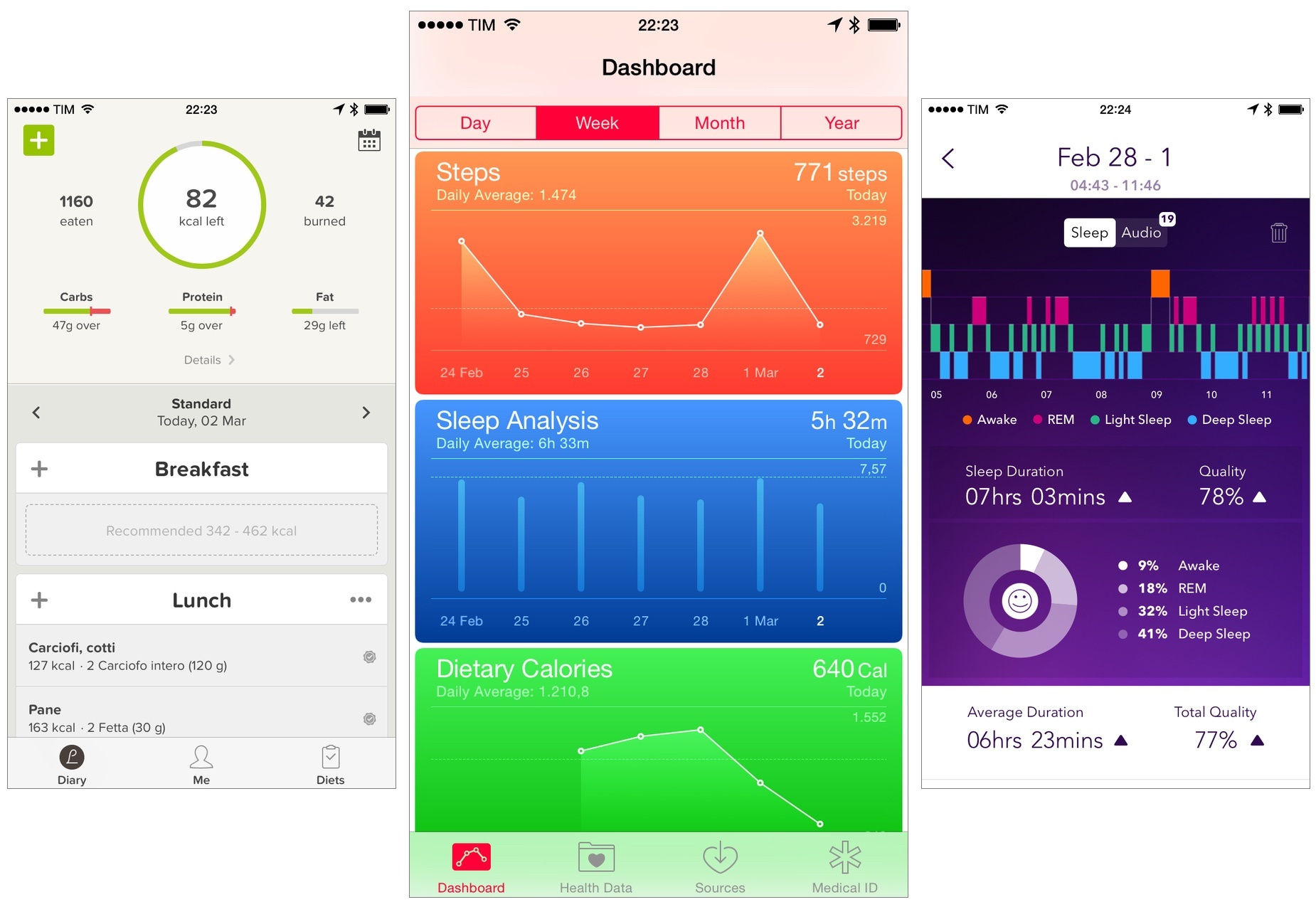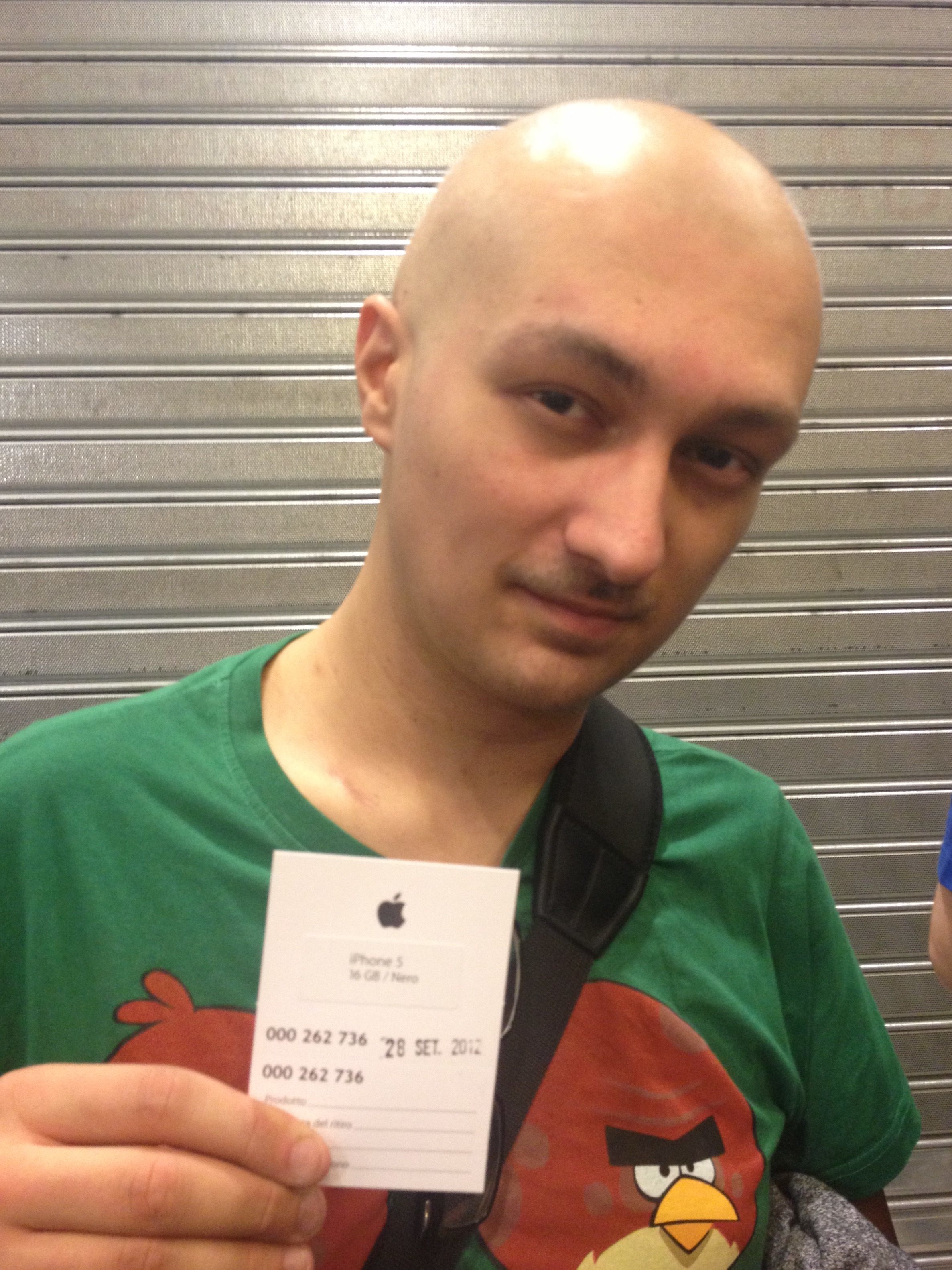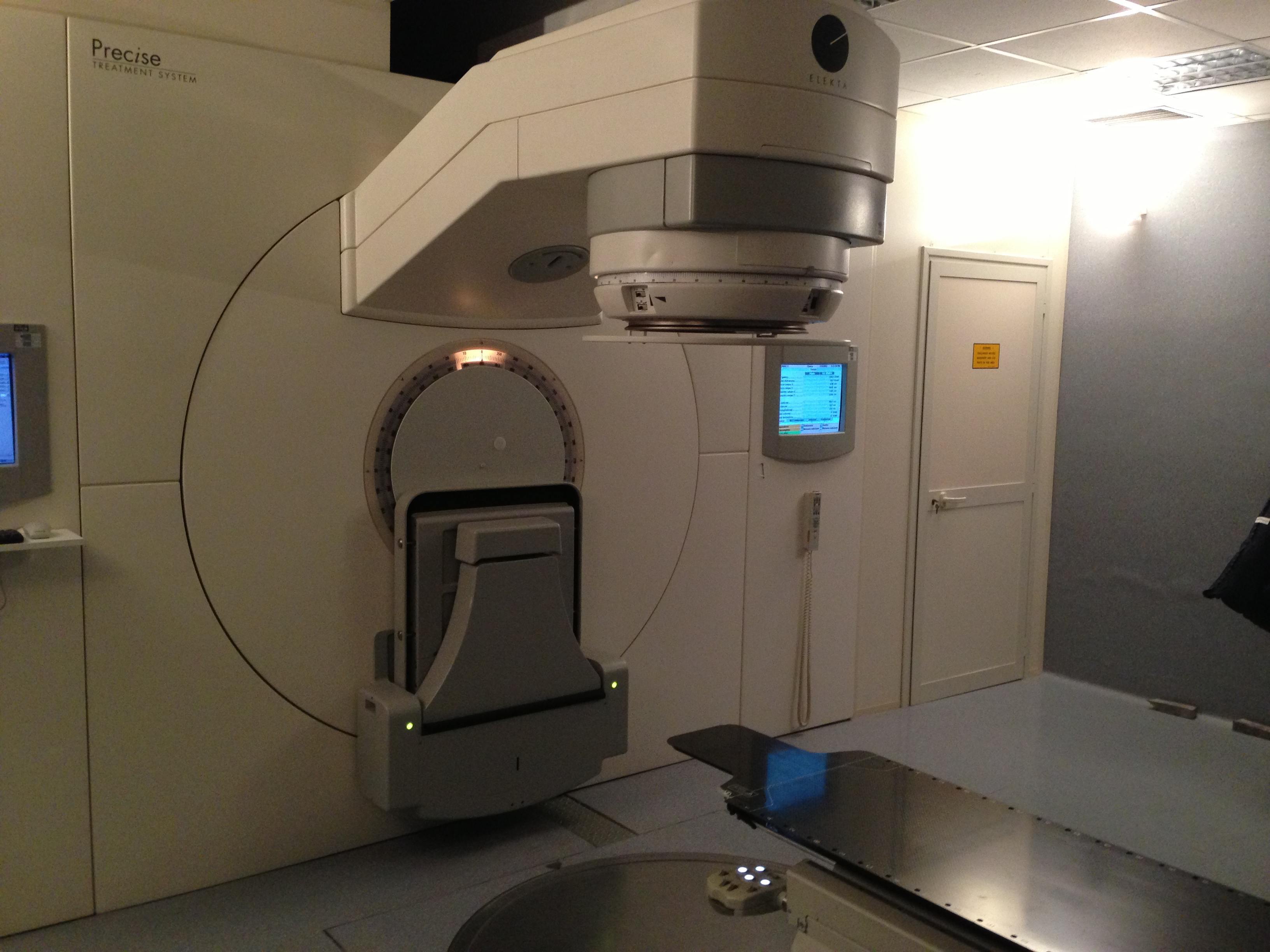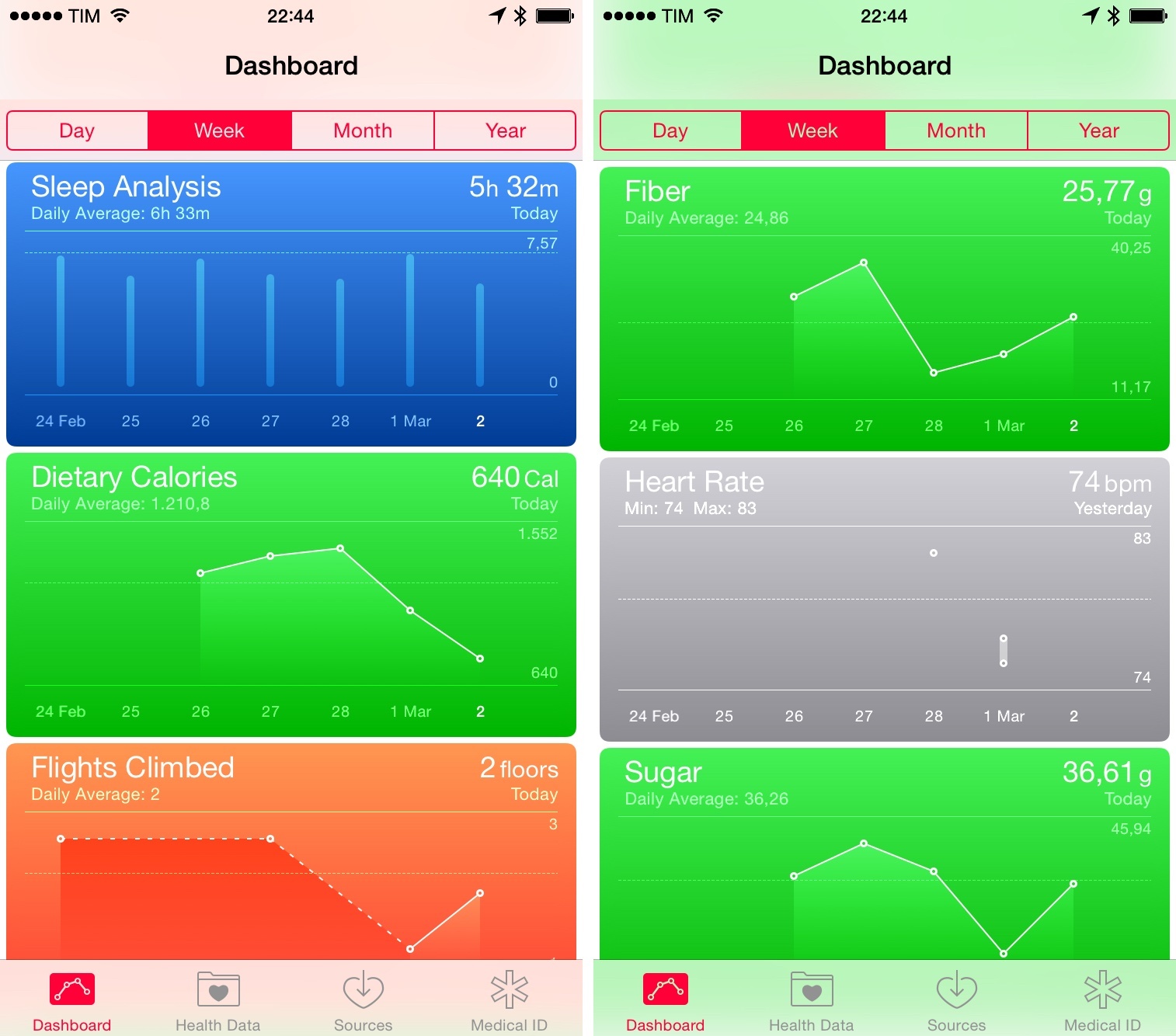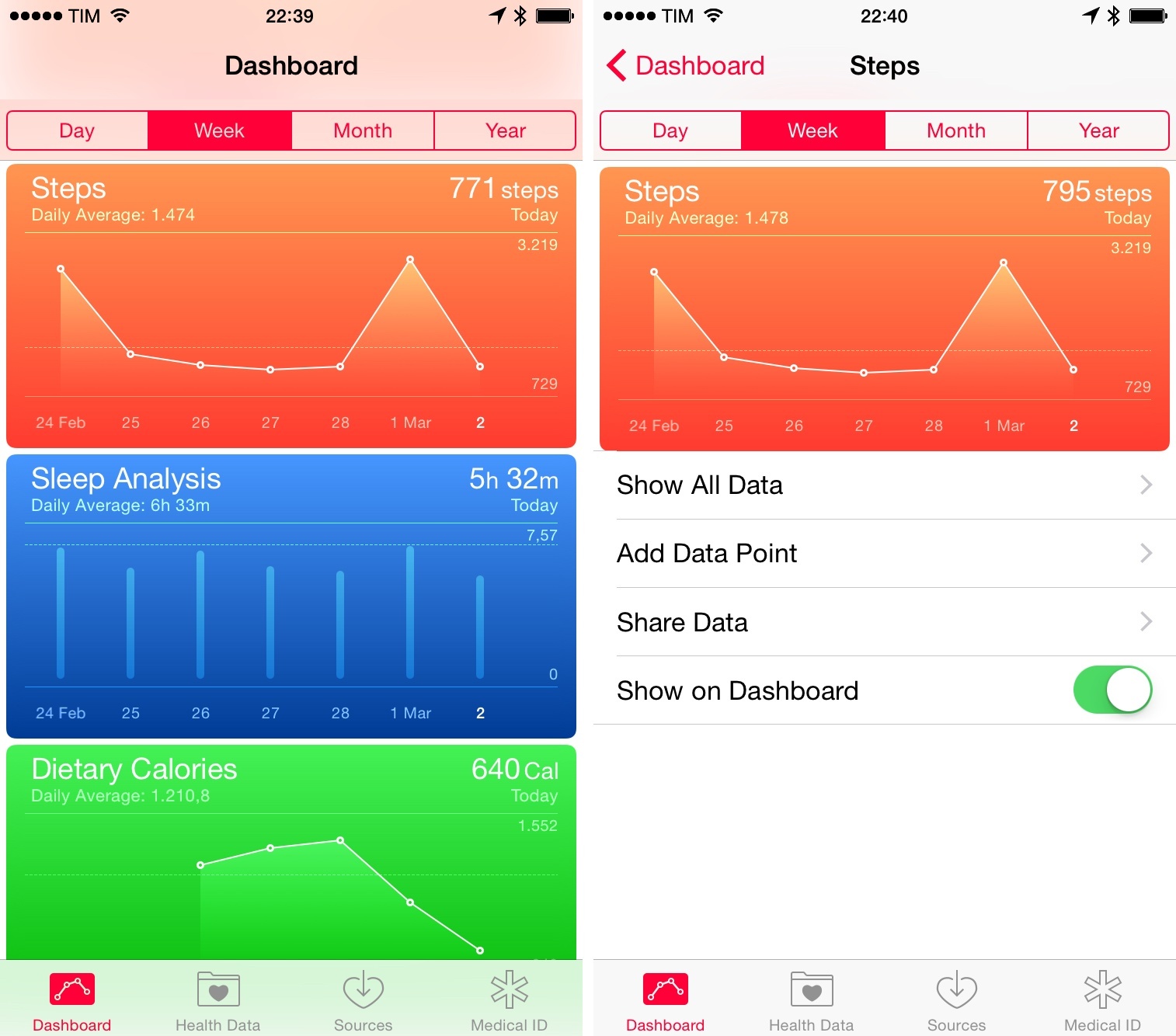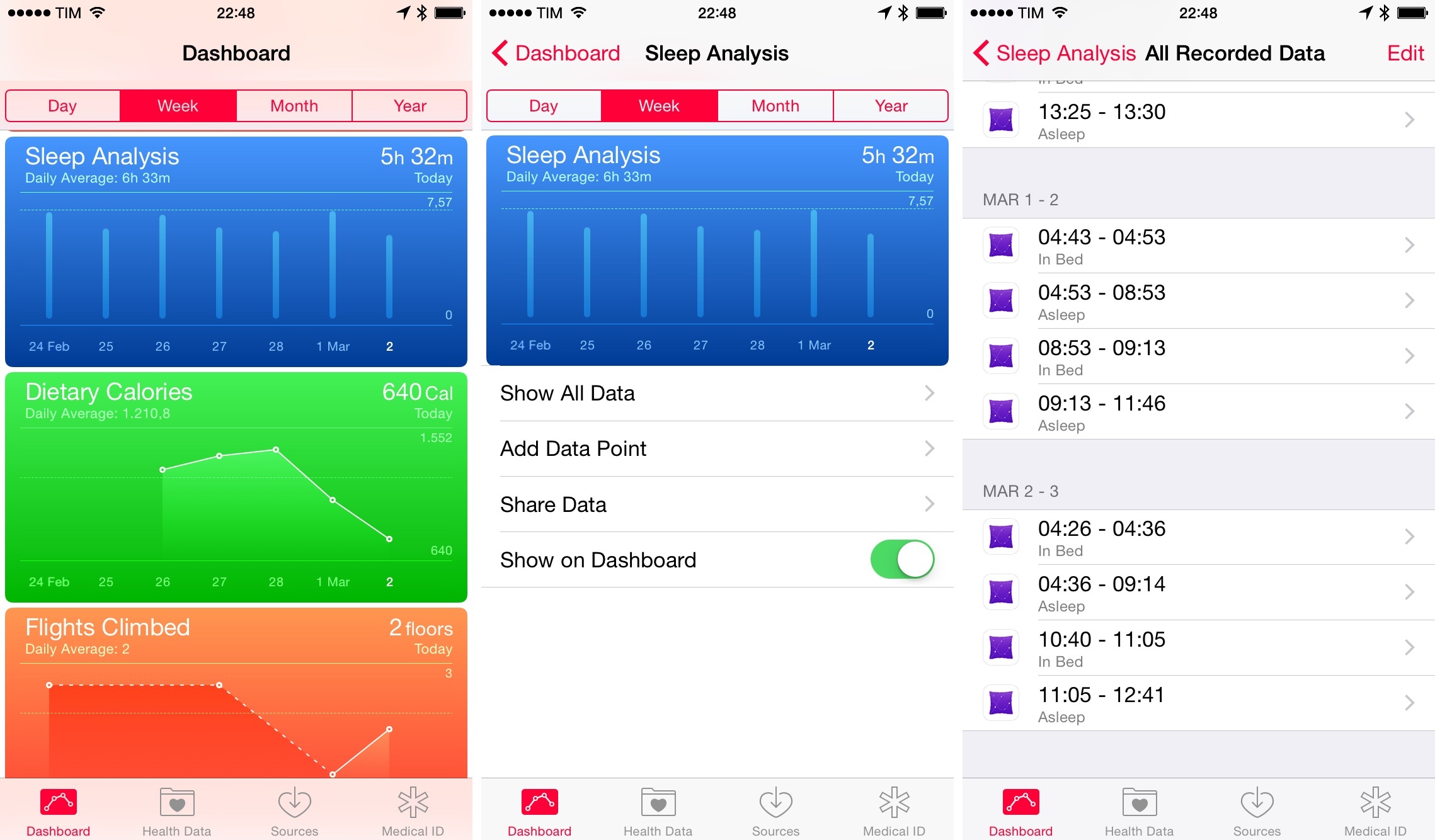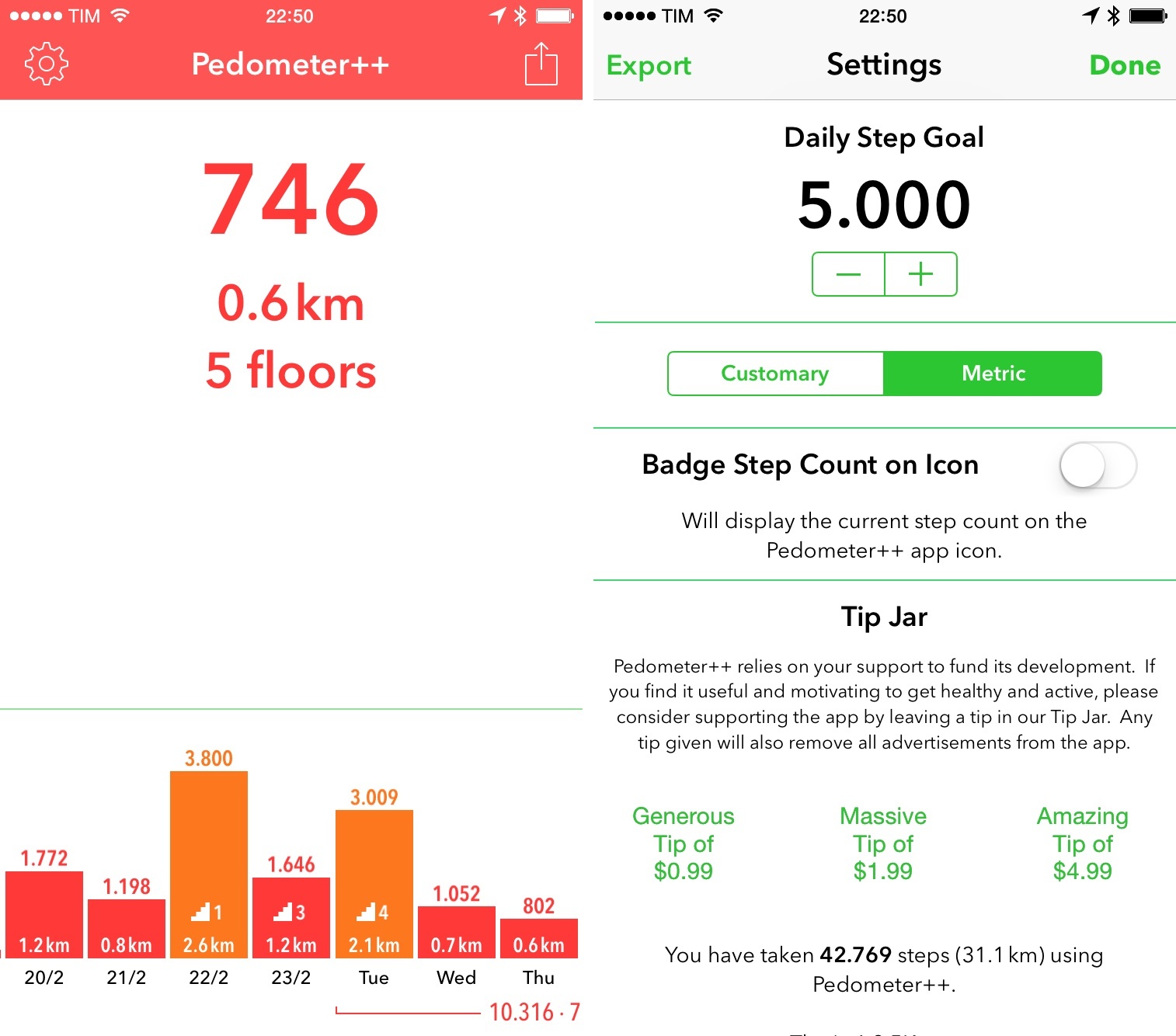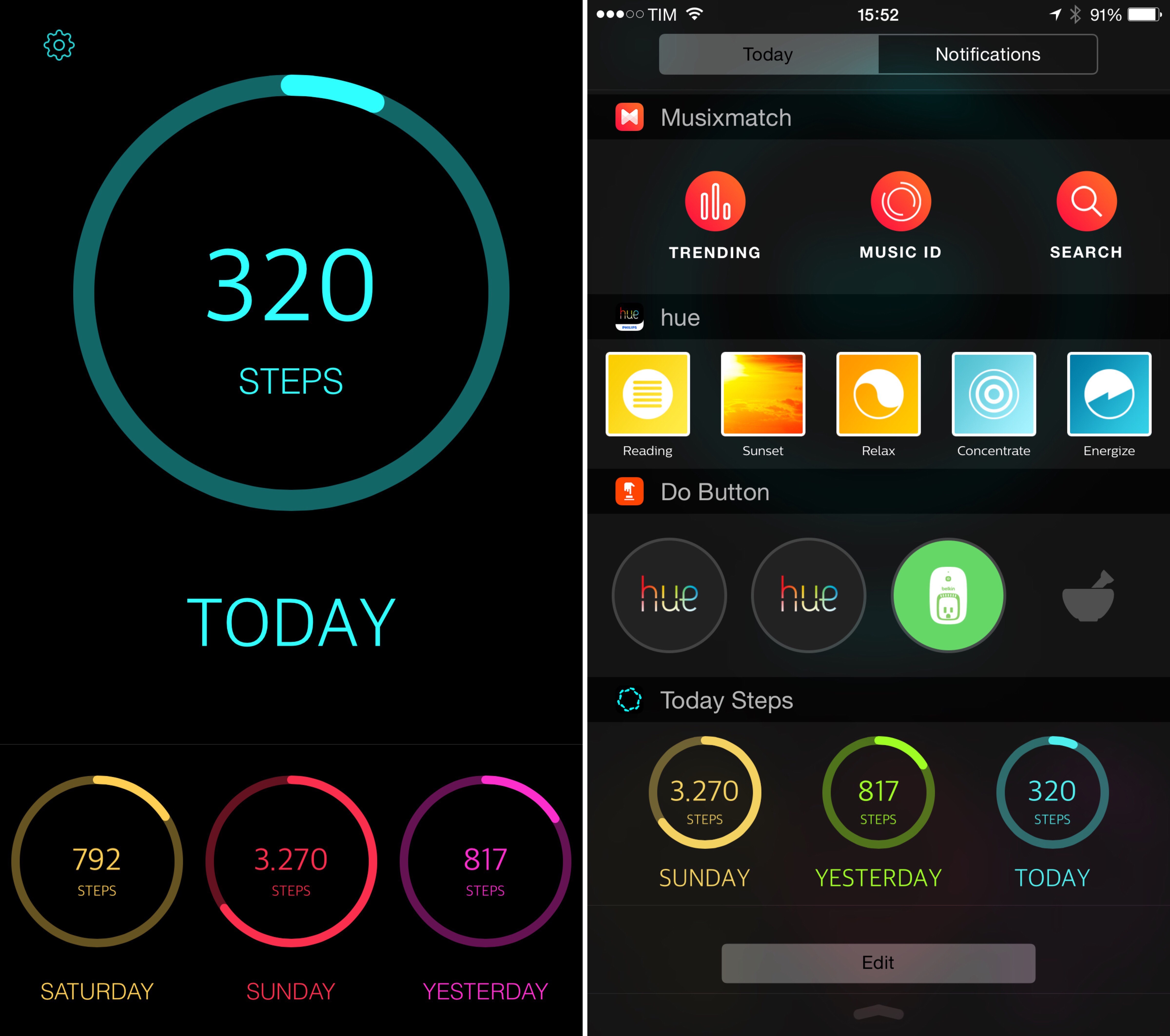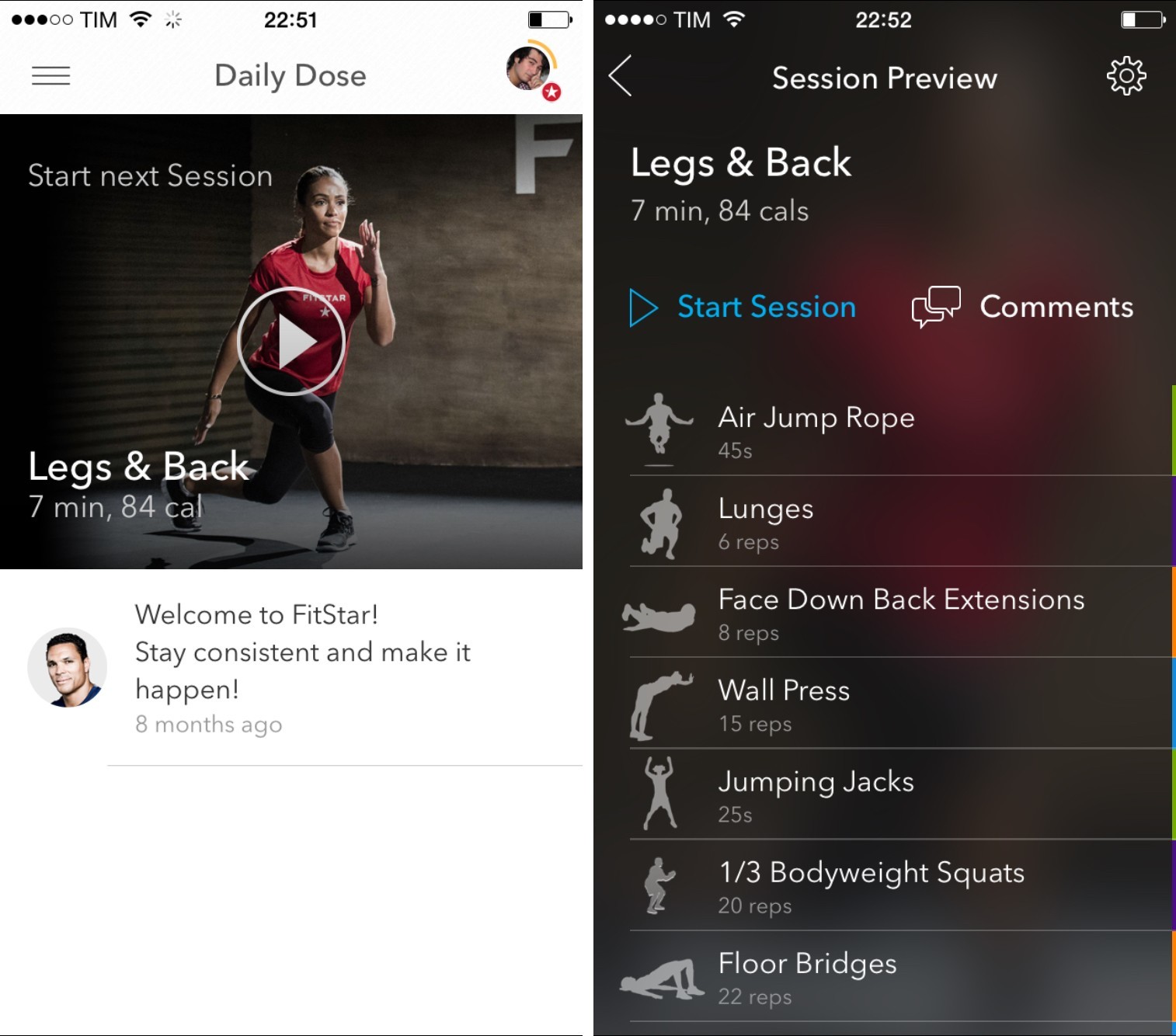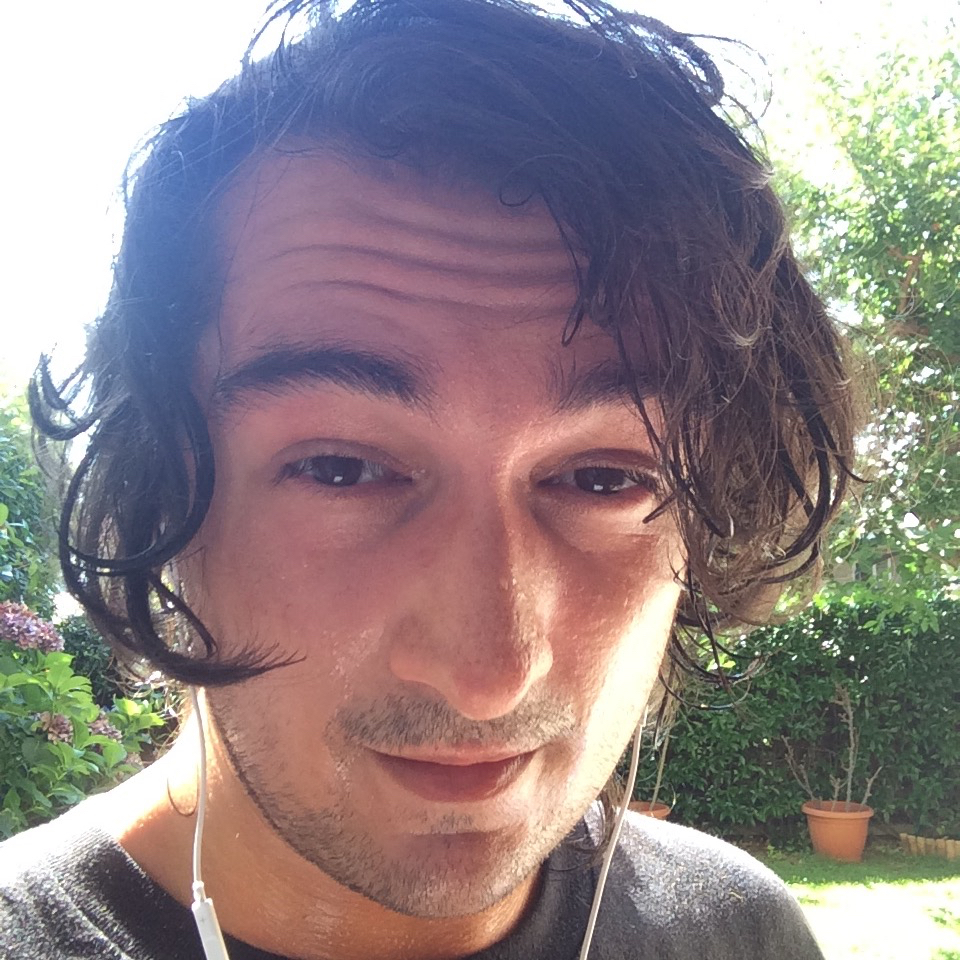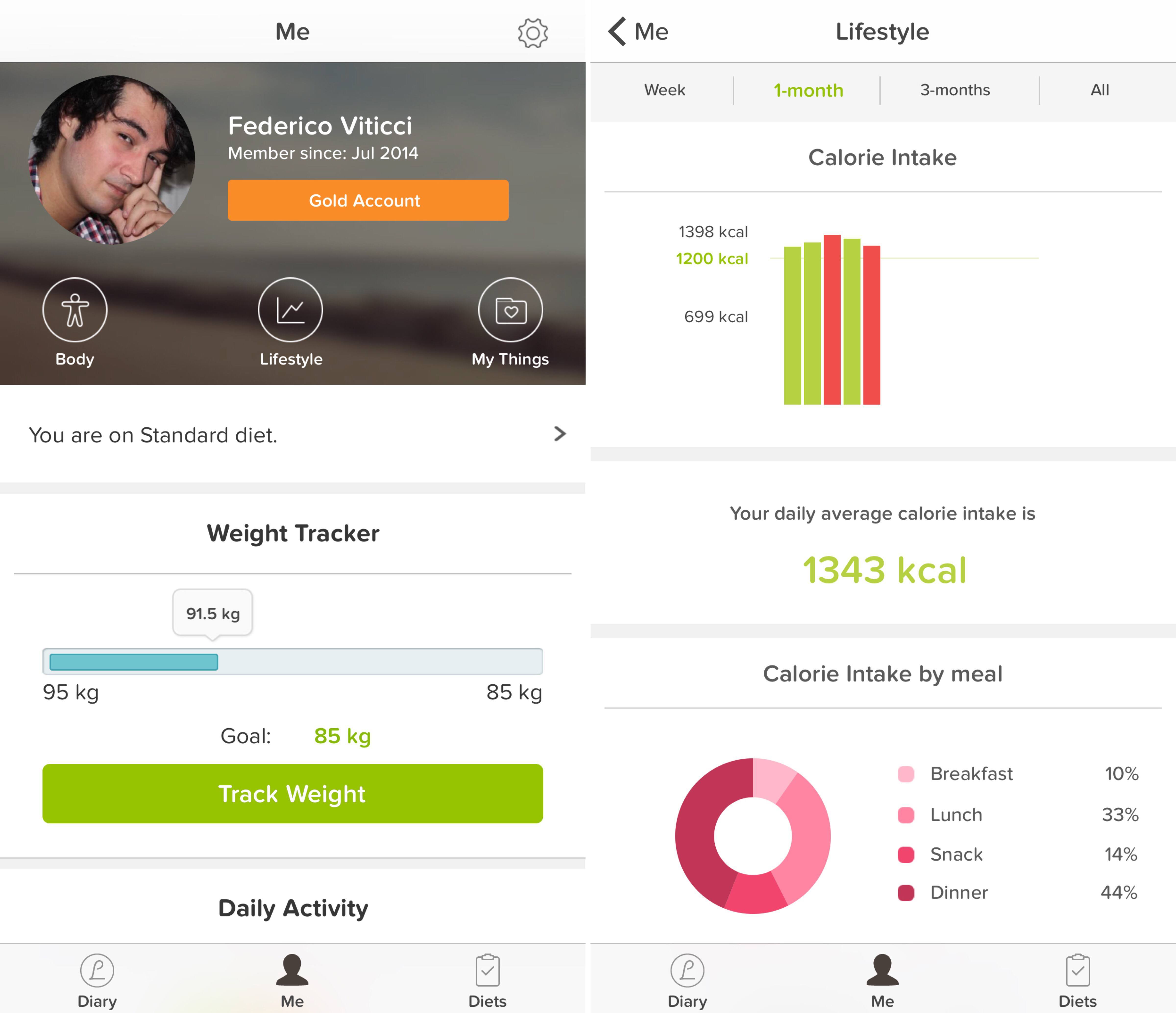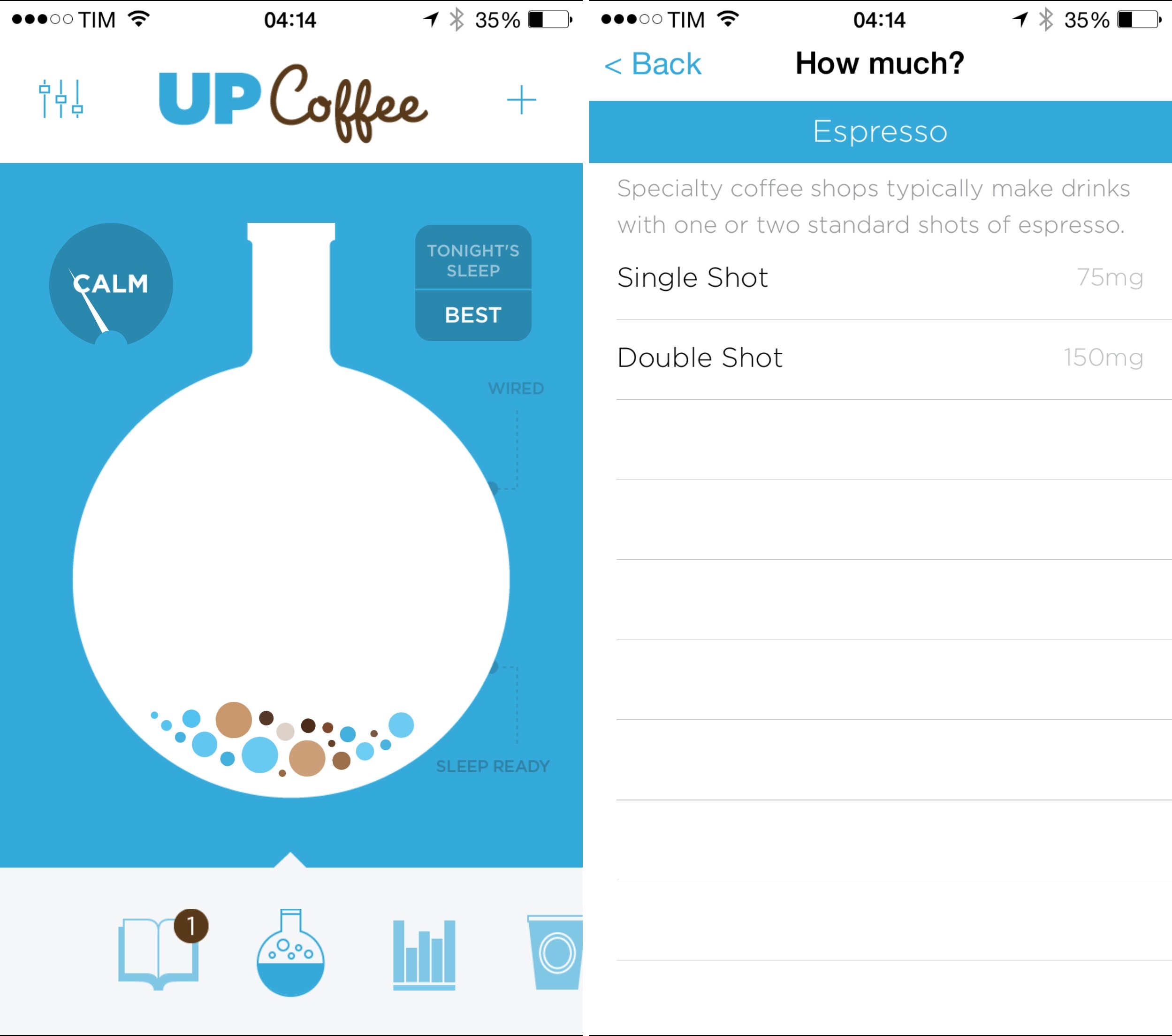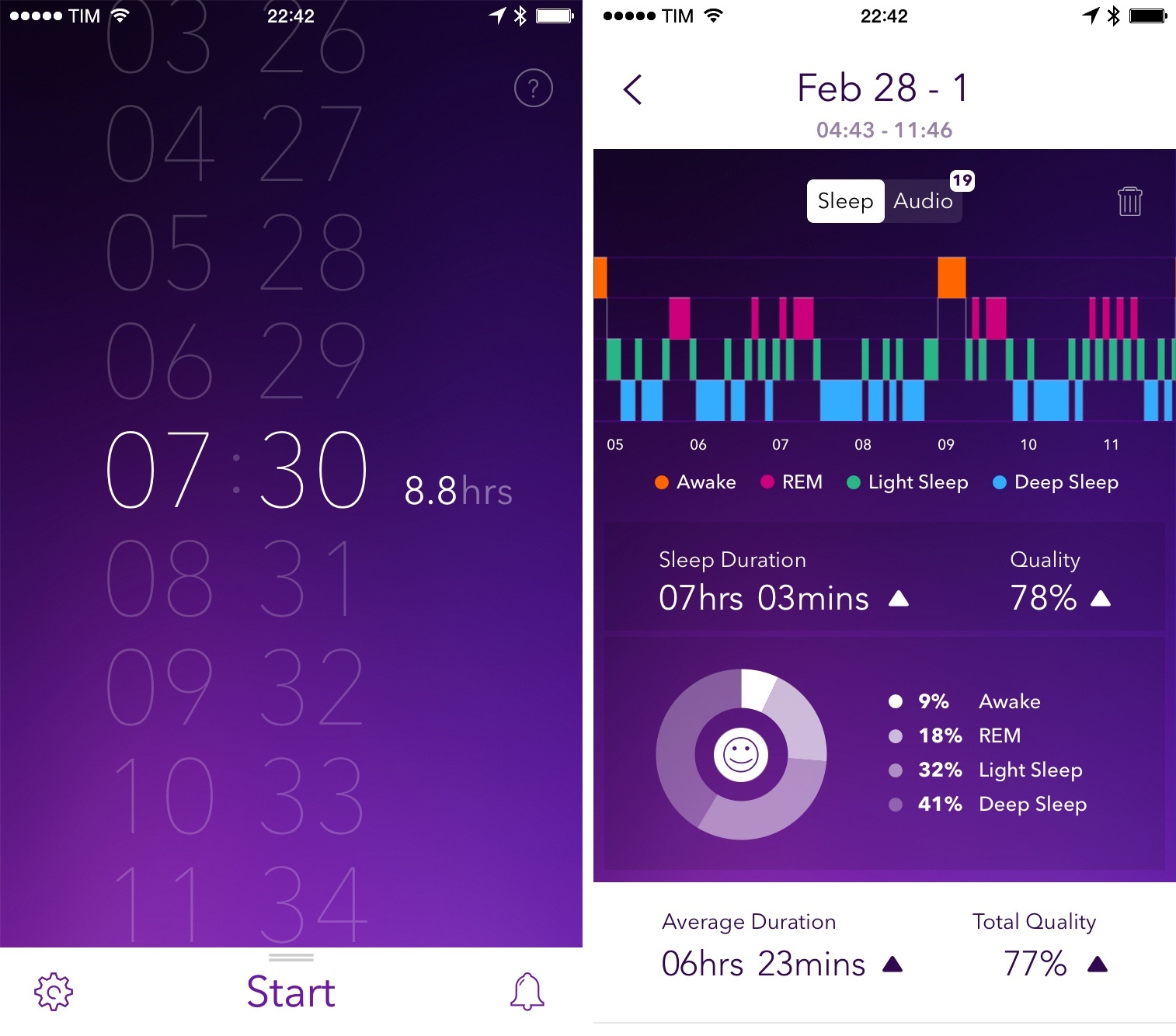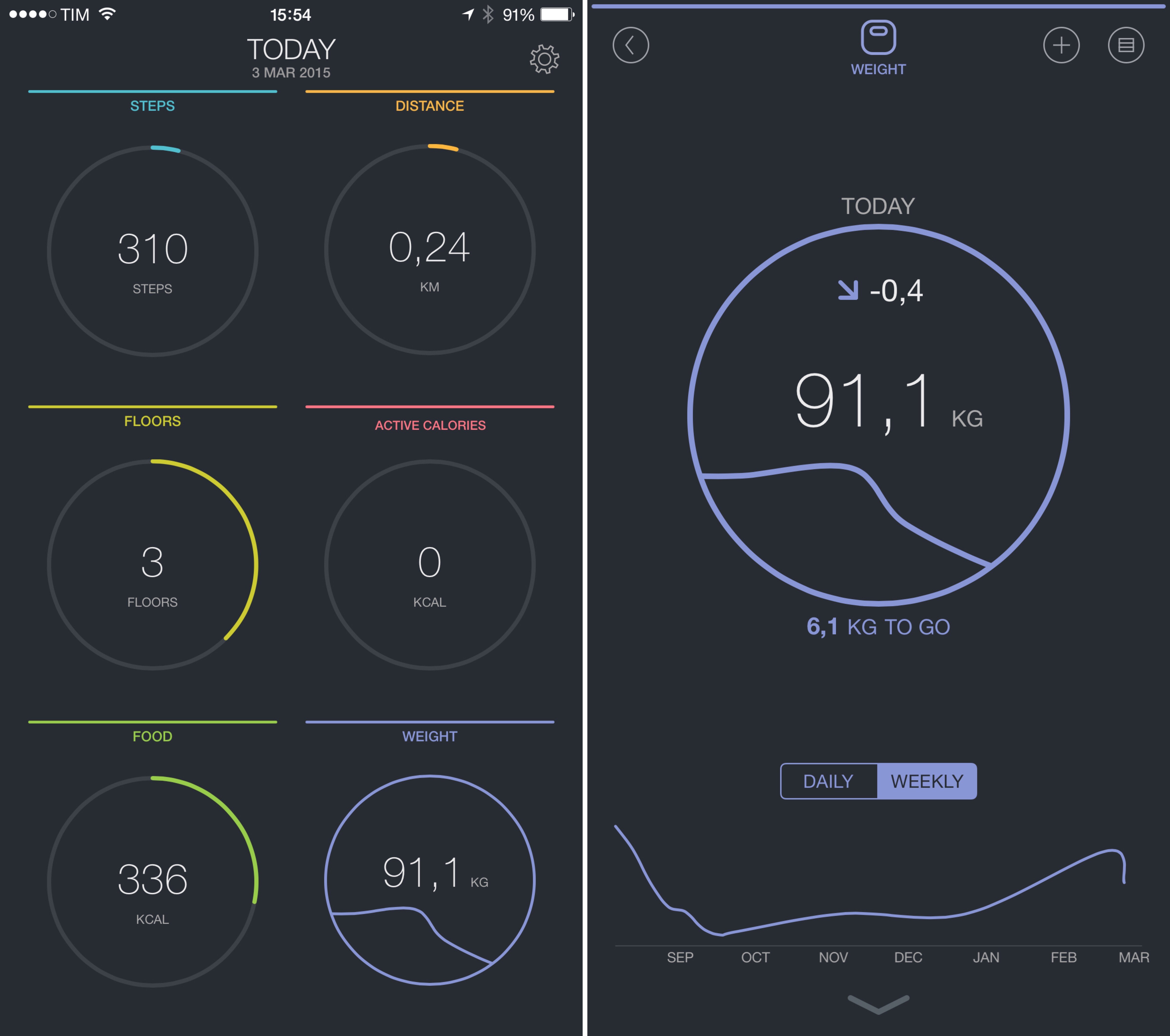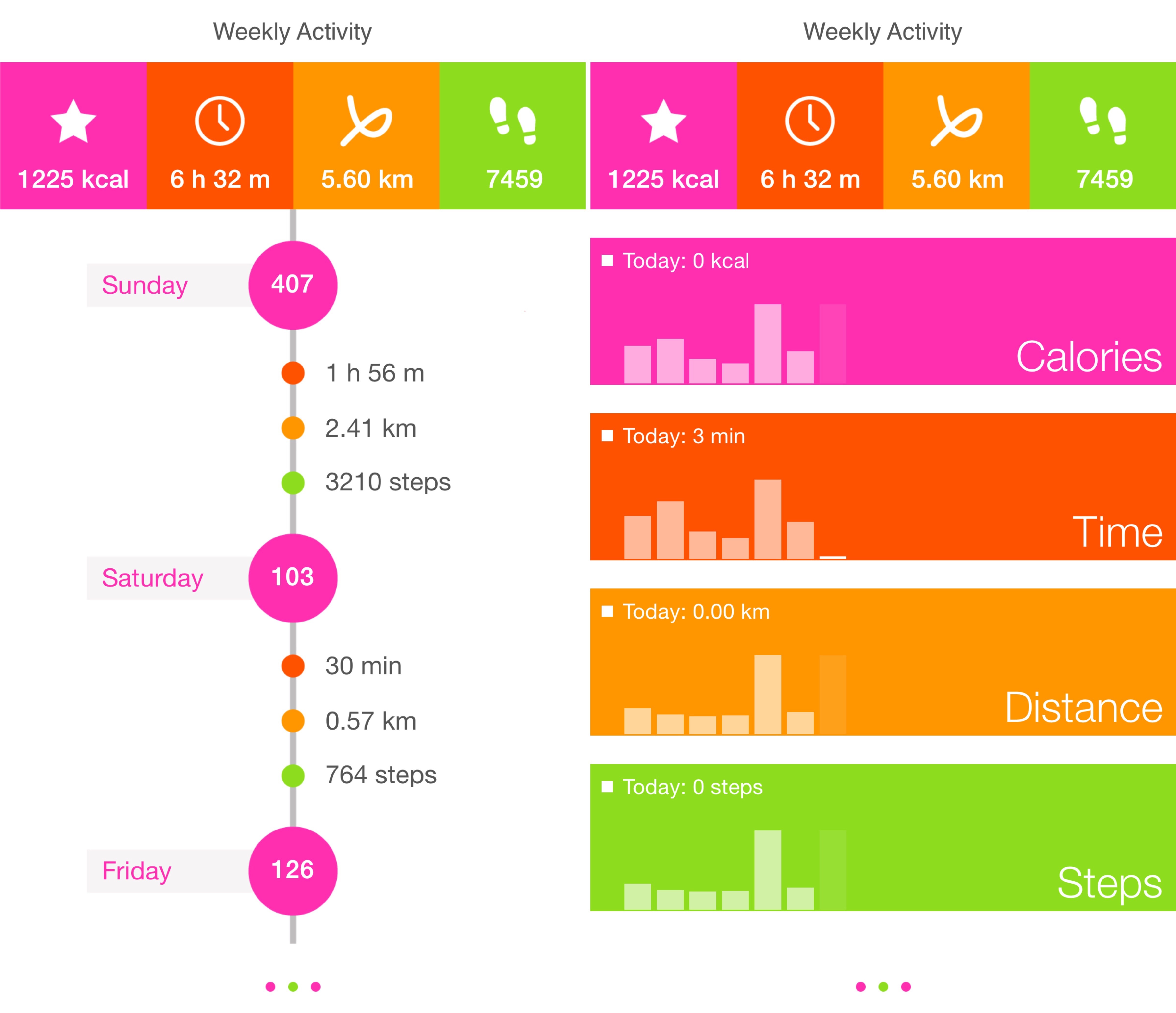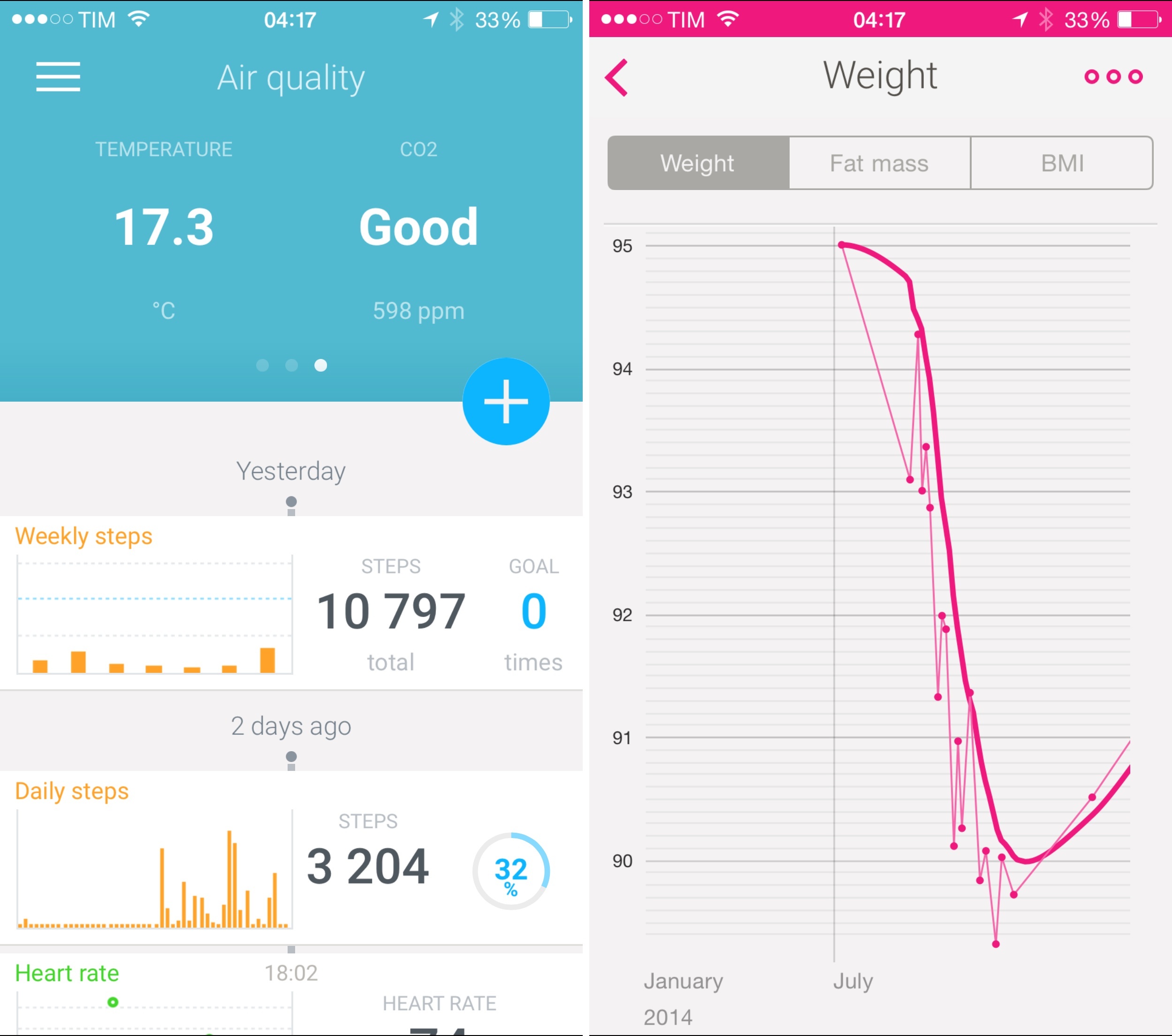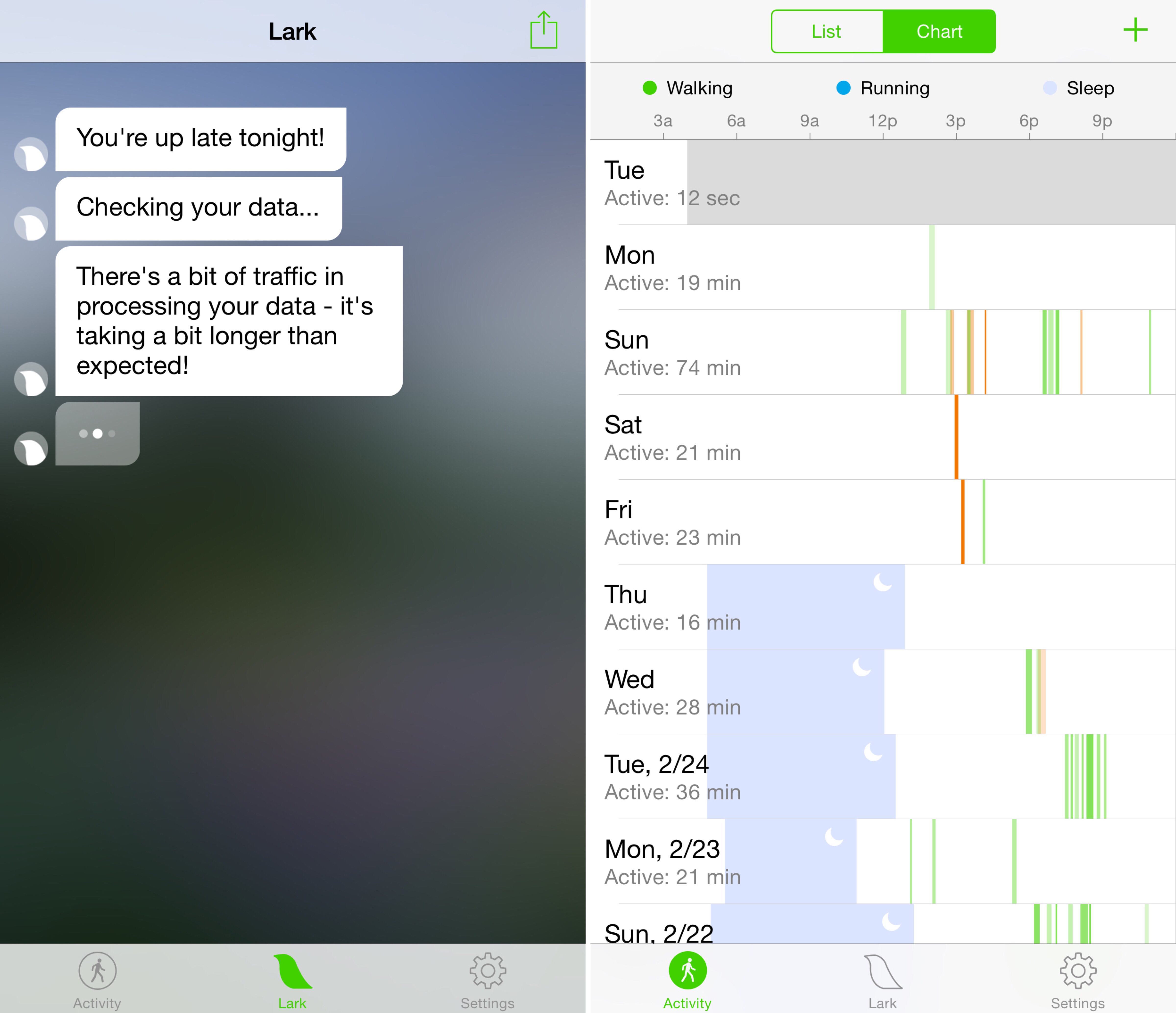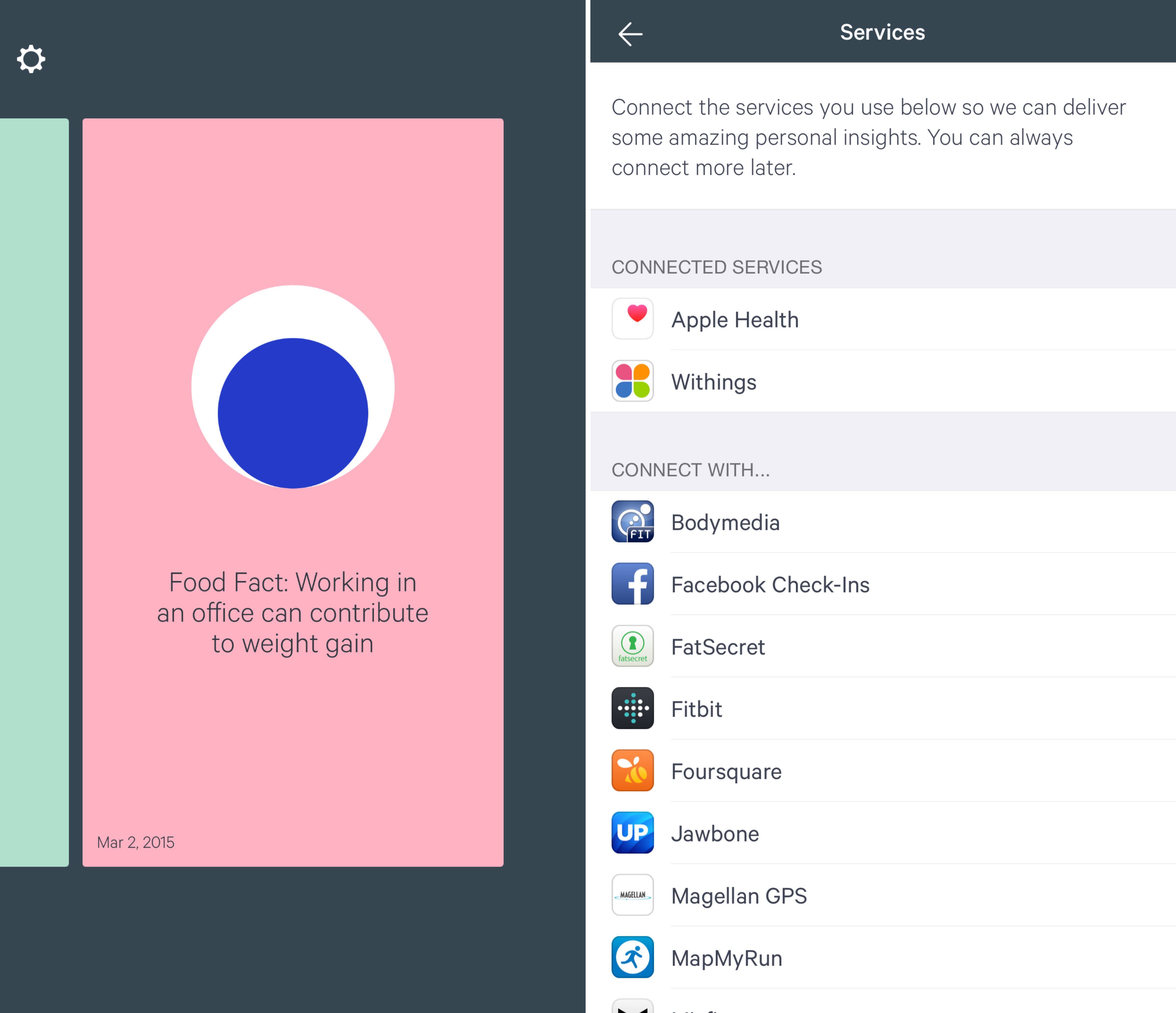I’ve been struggling to get back in shape after chemo.
Since being diagnosed with Hodgkin Lymphoma (Stage IV) in late 2011, my life changed. Beyond the psychological and emotional consequences of how cancer affected me, my family, and my relationships, it is undeniable and abundantly clear that cancer took its toll on me from a physical perspective.
Last year, I decided to regain control of my body, my life habits, and my health. I started tracking everything I could about my activities, my exercise routine, the food I ate, and the time I spent working with my iPad instead of walking, sleeping, or enjoying time with my family. Since then, I’ve made a decision to not let cancer and its consequences define me any longer.
I want to be healthier, I want to eat better, and I want to take the second chance I was given and make the most of it. What started as an experiment has become a new daily commitment to improve my lifestyle and focus.
And it wouldn’t be possible without my iPhone.
Background
I’ve never been an athletic type. I used to play soccer when I was 10, but I strongly preferred reading, videogames, and going out with friends to running in a field with 21 other boys. I continued playing as a goalkeeper in matches with friends or during the summers by the beach, but it was obvious to my parents that I wasn’t into sports, and they accepted it. I wasn’t fit but I wasn’t doing too bad either, so it felt like I was fine. A normal kid.
Later in life, I developed the kind of sedentary lifestyle that doctors advise against. After finishing high school and dropping out of university, I started working immediately and, unsurprisingly, all the work happened behind a PC. I was 20 years old, a smoker, and I still didn’t care about diet or achieving a “healthy lifestyle”. (“Lame! You only live once”, I’d often say. Funny how that works.)
My lack of exercise and attention to my habits resulted in mild back pains, posture issues, and other byproducts of spending most of my days at a desk with no fresh air and minimal activity – except for the weekends, when I would go out and drink and party and regret it on Sunday morning.
This went on for about four years. I was fine – just a little short on breath and not particularly active, but I didn’t complain because, somehow, I was losing weight.
I’ve learned to never trust inexplicable “somehows” when it comes to my health and body. As it turned out, weight loss was one of the first symptoms of cancer: it was followed by late night fevers, waking up sweating, itchy skin, weakness, apathy, lack of appetite, and many other “fun” signals that I ignored for too long and that eventually confirmed I had to start treatment for lymphoma as soon as possible. I used to write “ASAP” in important emails to my colleagues; that expression defined my relationship with oncologists and medical staff for over a year.
I’m 182 centimeters tall (6’2”, approximately) and, at the peak of my undiagnosed cancer, my weight was well below 70 kilograms (154 lbs). I looked bad. I felt worse. Obviously, chemo was going to be rough, but I figured that it would still be preferable to death at 23.
I started chemo in January 2012. I did a lot of rounds back-to-back with as little time between them as possible to make sure I could get a high amount of drugs and see how cancerous cells in my body would react. They responded, but not well enough. Doctors told me that they were going to save me, but that it would take time and that I needed to be patient. I was given a lot of steroids to keep me strong and have a decent lifestyle.
I couldn’t stand the sight of my mother crying when she looked at her only son, turning 24 and bald because of chemo.
But I felt great on cortisone. I took a big pill twice a day and I felt like I could run a marathon and ignore the fact that my arm was receiving injections every three weeks to put chemo in my veins. I channelled all my energy into enjoying time with my girlfriend, my family, and keeping MacStories up and running. It was one of the most productive periods of my life. I wasn’t expecting chemo and cortisone to be a recipe for GTD, but they worked.
I kept doing rounds of chemo, PET scans, MRIs, blood tests, and more chemos until August 2012. None of the chemo drugs had really worked, so my oncologist advised to try something more modern – a stronger chemo (100 times the effect of a standard protocol, although that could have been an exaggeration) to destroy my immune system and rebuild it from the ground up, using my own stem cells as an aid to the recovery process. The stem cells had been previously extracted from my blood in May 2012 and frozen in a tank. This sounds like science fiction stuff, but I witnessed the process and provided the stem cells myself (it’s called an “autologous stem cell transplant”).
For that chemo in August 2012, I had to be hospitalized for 22 days. The treatment itself would last 7 days (of consecutive drug injection), and then the healing process would begin with…“some” consequences. I was given a lot of steroids – more than usual – and I was prepared to face whatever could happen. For context, I weighed over 90 kilograms (my appetite came back almost immediately after the first round of chemo) and I was testing Pythonista and learning the basics of Python in a hospital bed. This is when I started considering the iPad as a work device (three years later, the results are encouraging).
The effects of that high-dose chemo were so physically unbearable, I don’t want to describe them in too much detail here. I couldn’t eat or move for 10 days, and I gave up on trying to get work done for MacStories because I felt like I didn’t exist. I gave my passwords to my girlfriend and instructed her on what to do with the site in case things didn’t get better.
But they got better. Stem cells began their rebuilding process after 12-13 days, and the amount of steroids I was given helped me recover in about two weeks. Eating solid food after 14 days of fluids really is quite the experience. Again, my body was going through the back and forth of losing weight and gaining it again at once – this time, though, it was under my control.
To wrap up my treatments (in the end, not even the strong chemo managed to completely annihilate cancerous cells), I started doing radiotherapy, which is when I began feeling a sharp pain in my right thigh. The pain grew stronger each day and I got to the point where I was visibly limping and couldn’t stretch my leg properly. As doctors later told me after several investigations (in the meantime, my PET scan came back negative for the first time), steroids I took caused an osteonecrosis in my right femur – essentially, blood had stopped flowing to a section of my femur bone, which “died” and was causing the pain I was feeling. My oncologist told me that was a common consequence for people who went through several rounds of chemo like I did.
I went into surgery in March 2013 and doctors managed to rebuild my femur head with a combination of “bone matrix”, platelets, gel, and other chemicals whose names I don’t remember. The surgery went well, but I had to walk with crutches for six months. I spent the most part of 2013 being unable to walk properly and I started attending daily physical therapy sessions in late summer.
Stupidly enough, because I thought that “I was okay”, I fell into my old habits of careless eating, no exercise, and a sedentary lifestyle. If cancer couldn’t kill me, did McDonald’s really have a chance?
Seriously: how stupid was I – after all I had gone through, ignoring the wellness of my body just because I was done with treatments? If anything, my experiences should have taught me about the importance of taking care of myself, so I could be well and spend time with the people I love and doing the things I care about.
Last year, I decided to put an end to my sedentary, lazy lifestyle. I was fed up: I gained weight because I didn’t pay attention to what I was eating or drinking; I didn’t have enough breath for two flights of stairs; I might have beaten cancer, but I wasn’t living a healthy lifestyle. I was wasting the second opportunity I was given and I felt ashamed of myself for not valuing it enough.
I turned to the iPhone for help. In the back of my mind, I always knew that I was the kind of person who would be interested in a daily exercise routine and healthier lifestyle with kind encouragement and the ability to visualize data and progress. That was the perfect motivation to get into the world of fitness tracking and lifestyle apps that was flourishing around the iPhone and the App Store. Change needed to come from myself and from my personal willingness to exercise every day and make conscious decisions about food and personal life balance, but the iPhone would provide all the other tools.
I truly felt that software could help me. That was June 2014, and Apple had just announced its HealthKit platform at WWDC, which would allow developers to plug into a central repository of personal health and fitness information. HealthKit would also feature a standalone Health app on iOS 8, due in September, but I wanted to start my new routine right away. I did some research and bought hardware and apps that could help me along the way.
I bought a Fitbit and then a Jawbone UP; a Withings Smart Body Analyzer; I tested MyFitnessPal and Lifesum for months; I signed up for FitStar and downloaded dozens of apps from the App Store. I wasn’t just obsessing about tools without actually doing anything: I started exercising every day, eating better, drinking more water, and going to bed at more decent times. Occasionally, I went a bit over the top – at one point, I was using two food-tracking apps at once and I couldn’t decide between counting steps with my iPhone or my Jawbone UP. Other times, I didn’t eat enough and I felt sick. Or, I went weeks without exercising when I was moving from Viterbo to Rome because every routine falls apart when you’re moving. I’ve had my ups and downs, but the underlying motivation never went away.
I’m here, and I feel stronger than ever.
I needed to respect the second chance that science gave me – for myself and for my family. For the past nine months, I’ve changed my lifestyle with a focus on being healthy and conscious about food, exercise, and sleep.
And it wouldn’t have been possible without my iPhone.
Health App and Walking
The first step (no pun intended) was to walk more every day. My physical therapist advised (given the recovery of my right thigh) against sitting for prolonged periods of time, but she also told me it’d be best for me, at least in the first couple of years after femur reconstruction, to avoid running as it would put too much pressure on the femur head that is still recovering. Therefore, I have to walk regularly.
With the iPhone 5S in 2013, Apple introduced the M7 motion co-processor, a small piece of silicon that allows the iPhone to count steps as well as discern running from walking and other activities. With the iPhone 6, the M7 evolved into the M8, which also packs a barometer for relative elevation, has higher accuracy, and can even count floors you’ve climbed. This is perfect because I now live on the third floor of a small building and I can choose to take the stairs instead of the elevator every day.
For months, I beat my daily step count (initially set at 5,000 and then at 7,000) by walking on a treadmill during the afternoon and monitoring everything with a Jawbone UP. With time, I’ve come to prefer the strategy of taking more breaks during the afternoon and having real walks outside my house – going to the market with my girlfriend, walking the dog, and other normal activities that involve walking. Being active more often feels, to me, more rewarding than dedicating 30 minutes to intense walking on a treadmill and then sitting for 5 hours afterwards. To facilitate this behavior, I’m using small but practical changes such as parking my car a little farther from my building or avoiding the elevator.
Steps aren’t a direct indicator of a healthier lifestyle, but, I believe, they’re a good sign of movement and dedication in a typical week. I like using my iPhone to count steps because other iOS apps can share a common database provided by Apple’s Health app, which allows me to switch between different visualizations of data and implementations that offer something unique and different.
Apple’s Health app wasn’t off to a good start when it launched in September. After much anticipation, a bug in HealthKit forced Apple (and third-party developers) to pull Health-compatible apps from the App Store after approval; as a result, developers scrambled to remove HealthKit integration from their apps and resubmit them without the functionality. Then, Apple softly relaunched HealthKit apps with a dedicated section on the Store following an iOS update aimed at fixing bugs in the framework, but, for me, the Health app was still unable to store data and feed it to other apps. I was disappointed, but I was using a Jawbone UP anyway, so I waited while continuing to share my personal data across third-party services with custom integrations inside apps.
Over the past few months, Apple has iterated on HealthKit and Health to get rid of bugs and allow communication between apps and Health through a common layer. After keeping an eye on the (according to many) “finally working” HealthKit, a few months ago I decided to start using iOS 8’s Health app as much as possible and seek out third-party apps that took advantage of HealthKit.
I made this decision for various reasons. First and foremost, after several months of custom integrations between fitness trackers and other health-focused apps I was fed up with how inconsistent and fragmented data reporting across apps was. In the pre-HealthKit era, ending up with inflated step counts or duplicated calorie burns would be a common occurrence if I didn’t pay enough attention to which piece of data was going where. There’s insanely high competition in the fitness tracking space – this is precious, personal data you’re giving to third-party companies that often also want you to buy specialized hardware – and, before iOS 8, lock-in was a strategy blatantly adopted by some companies to ensure you wouldn’t switch to a competing app. Runtastic, MyFitnessPal, Jawbone, Withings, Argus, Human – I tried dozens of these apps and I had to remember (often with notes)1 where I wanted my central repository to be. Following weeks of manual clean-up, I set up a system that made data flow towards Jawbone after carefully handling logins and integrations in apps so I wouldn’t duplicate anything.
With the new Health app, I have less granular control over how multiple apps exchange information and I’m losing some of the advanced features of custom integrations, but that’s also what I’m enjoying. Instead of micro-managing every single fitness tracker and health dashboard to make sure they’re not duplicating data or getting confused behind the scenes, I can simply point any app to Apple’s Health and rest assured that the same information will always be accessed by multiple apps at the same time. Instead of giving logins to third-party services, I just need to toggle a few switches in the Health app and grant or revoke permissions whenever I want. I wouldn’t exchange the peace of mind of this system for any manual integration.
More importantly, I switched to the Health app in preparation for the upcoming Apple Watch and the role it’ll likely play in my life. I plan on buying an Apple Watch as soon as it’s available in Italy because I think its fitness and notification features will deeply change my lifestyle and the way I communicate. Moving to Health now allows me to get my apps in order and start using Apple Watch with a system that’s already in place and has historical data about my habits. I feel like Apple is betting hard on health and fitness for the next decade, and I might as well start using their system now.
Counting steps is a good demonstration of the Health app and its sharing capabilities with HealthKit on iOS 8. The app is organized in tabs, but I’m primarily interested in the Dashboard (which offers a breakdown of categories I’ve pinned there) and Health Data (individual categories and entries).
Because each section in Health can be configured to show daily, weekly, monthly, and annual progress, I can pin my step count as measured by the iPhone to the Dashboard and switch between Day and Week views to check my progress. I like how Apple is using a chart for steps: in the Week view, this makes it easy to see how much I’ve been walking on any given day, and it lets me see days when I’ve been idle at home or made an effort to go out and walk. I’m a fan of the simple but information-rich design of cards in the Health dashboard: in weekly mode (my favorite), I can check my average daily step count and compare today’s steps to yesterday’s so I know how I’ve been doing over the last 24 hours.
In addition to steps, the iPhone 6 and 6 Plus can track flights of stairs climbed, which is useful in my new building. I live on the third floor, and the Flights Climbed card in the Health app rewards me for not using the elevator.
A common opinion on Apple’s Health app is that its data-driven approach is not intuitive and can be intimidating for new users. I don’t think that’s a fair assessment of what Apple is trying to do with Health. For data input, Health clearly depends on apps from the App Store and, for some categories, on the future capabilities of the Apple Watch. If you don’t want apps to save their data into Health, you’ll have to enter stats manually with the keyboard, which is indeed intimidating, but also a last resort. Saying that Health requires manual data input would be like using the Phone app in keypad mode all the time; it’s there because it has to be, but you never really dial phone numbers anymore.
For data presentation, the simplicity of Apple’s Health is refreshing. In the Dashboard, you choose to show cards with information that’s important to you and that can be adjusted with four time filters. Cards are color-coded depending on the category they belong to, which makes it easy to parse information at a glance – I know that the Caffeine card is green and Sleep is blue. The graph-based approach packs a lot of information at once without feeling complex or confusing – I’m a fan of the Dashboard view in Health. If anything, because the app is so heavily based on data coming from other sources, I wish Apple recommended the best apps and devices to track certain values directly in the Health app without forcing me to browse the App Store or Apple online store.
I don’t need the rich visualization of Health all the time, and, thankfully, Apple built a system that is the opposite of lock-in (as long as you’re on iOS). Counting and visualizing steps is, again, a good demonstration of Apple’s efforts with a sensor-packed iPhone that stores data in a central repository.
When I want to visualize my steps with colors for individual days against a common goal, I can use the excellent Pedometer++ by David Smith. Pedometer++ draws data from the iPhone’s M8 chip and displays days as vertical bars below or above a green bar that is your daily step goal. The app calculates distance, color-codes each day depending on results, and even tracks floors climbed on the latest iPhone 6.
Today Steps is a recently released app I’ve been trying to see step counts at a glance with a beautiful Apple Watch-like layout of colored graphs against a black background. With its large typography and handy Today widget, Today Steps is another Health-based alternative to Pedometer++ that lets me see how much I’ve been walking with just a swipe and a quick peek.
I’m a visual person and I need a sense of progress to understand I’m getting better at a specific task. I’ve always been this way and it’s affected how I work, play videogames, manage my finances, and, now, how I relate to tracking fitness data. HealthKit’s open approach and freedom to use whichever app I like had a meaningful impact on me in that I’m more aware of how much I move every day and I want to walk more to reach my goals. My leg feels better because technology is helping me better understand my inactivity and I’m more motivated because I have tools that show me progress and reward me for it.
Life after cancer is an everyday carnival of small victories.
In its simplicity, walking is the manifestation of the freedom that was given back to me. I grew up thinking that you don’t understand the value of the things you care about until you lose them, and that’s true, to an extent, but it still doesn’t prepare you for life hitting you in the face and saying “Sorry, but you won’t leave a bed for the next month”. Philosophy doesn’t prepare you to losing the simple, human feeling of going for a walk because you want to. Not even this story will train you to ask your partner to describe the weather outside because you can’t stand up.
Two years after my last treatments, sometimes I still turn to my girlfriend and I tell her that it’s amazing we’re able to be together and walk and laugh and go shopping and drive and not be stuck in a hospital room that smells like aseptic plastic bags and wet floors. And I also feel like I’m not communicating this well or concisely enough – the instinct of walking and going places is so intrinsic in mankind, the joy of getting it back sounds grandiose to most people. I get it. But it still feels incredible and I want to write it.
Small steps, literally. Today I’m free and I can count steps on my iPhone. Big deal – cue sarcastic tweet. Yes. It is a big deal to me. Because every day that I open the Health app and I see a plunge in that chart or I launch Pedometer++ and I see a red bar, it’s a day that I wonder whether I’m wasting my time trying apps and workflows and being obsessed with the urgency of news instead of going out and holding my girlfriend’s hand or walking with my dad, whom I don’t call enough.
This tiny computer, in its obviousness and unsurprising advancements, keeps me in check and tells me what I often forget about – that I should get up and go. From a technological perspective, Apple’s Health and the apps I use are solid and useful; from a conceptual standpoint, watching that step count go up and up is a reminder that I’m free.
Exercising
My strategy for a healthier lifestyle and getting back in shape obviously went beyond counting steps. I decided to exercise every day to be less sedentary, rebuild muscle tone to maintain posture, stretch more, and, generally speaking, be active every day.
There are hundreds of fitness coaching apps on the App Store. Eventually, I settled on FitStar and purchased an annual subscription. FitStar is exactly the kind of virtual coach I was looking for with features that are only possible thanks to the iPhone and the App Store.
I’ve never liked going to the gym or buying loads of equipment to get in shape. I’m not saying people who do that are wrong – it’s just not for me. I prefer an old-school workout with crunches, squats, and push-ups done by myself with a personal trainer. For cost reasons, I can’t afford to have someone come to my house to monitor my workouts every day, but FitStar is an excellent digital counterpart that has helped me lose 25 pounds, achieve better posture, regain flexibility with my right leg, and feel better about myself. It’s the closest thing to a personal trainer I could get and I use it religiously.
FitStar is a workout app based on video instructions and programs. There are four programs to choose from, but my favorites are Daily Dose and Get Lean. The former is a series of 10-15 minute sessions to complement an active lifestyle; Get Lean is aimed at burning fat and is designed for weight loss. In addition to programs, FitStar has freestyle sessions to add to your daily routine or just try something new, and they’re usually exercises targeted at specific areas like legs, chest, or abs. Interestingly, FitStar also curates themed sessions such as Date Night, Boot Camp, and sessions sponsored by Strava and Runtastic. Again, I like the classics: 7 Minute Workout and 10 Minute Abs.
FitStar works for me because it’s designed well and hits all the right notes. Once you’ve picked a program, the main screen shows your next session with a preview of how much time it’ll take, what it’s going to be about, and how many calories you’ll burn with it. In the top right corner, you can tap on your profile picture to see your progress, a log of completed sessions, and badges you’ve unlocked (think game achievements, but for workouts).
FitStar is respectful of a user’s time and lifestyle – it’s got sessions that go on for 30-50 minutes, but it also comes with short sessions based on the idea that you should always have some basic physical activity done every day. When you tap on a session preview, you’re shown another preview to confirm you want to start the selected session; in this screen, individual moves have an illustration to summarize what you’ll have to do and the app will also display required reps and time. When I had a portacath installed in my chest and I couldn’t do sessions that contained shoulder and chest exercises, the illustrations helped understand how much I’d need to skip at a glance. Eventually, I broke the portacath because of my insistence on exercising despite the safety concerns and I had to go into surgery to remove it, but that’s another story (surgeons are amazing).
The videos are where FitStar stands out. They are professionally done, available in SD and HD, and they come with acting and trainers showing you how to properly perform a certain exercise. Most videos feature former NFL player Tony Gonzalez, who clearly knows his business and explains workouts with a clarity and tone that I appreciate.
I felt a little silly trying FitStar by myself initially, but that embarrassment ended as soon as I realized I was sweating and that the comments from the videos were accurate and timely. It’s a small thing, but I like that, during a workout, Tony (or another trainer) seems to know exactly when I’m starting to feel a burn in my legs or when my body begins to shake because of muscle tension. It’s just an app with videos of people exercising and telling you to do the same, but sometimes the illusion is so strong, it feels like the trainer knows what I’m doing in real-time.
The background music for workouts isn’t terrible (it’s quite catchy, actually), but you can play your own music too. Videos can be beamed to the Apple TV via AirPlay if you want to exercise in front of your TV, but, if you’re like me and only use your iPhone, you’ll just look at the short preview videos for each exercise, put your iPhone on the floor next to you or on a desk, and pick it up again when you’re done. I like that FitStar has been designed with this use case in mind: comments ensure you can follow along even while you’re not looking at the screen, and other audio cues help you count reps and know when an exercise is ending.
User interaction during workouts in FitStar has been kept to a minimum but it’s still effective and well built around the concept of the app. At any point, you can tap the screen to pause and resume, which is helpful if an exercise is too strong and you need to catch your breath without letting the session go on. At the end of each exercise, FitStar asks you to confirm the number of reps and choose one of three votes indicated with emoticons – “just right”, “too easy”, and “brutal”. When a workout is done, you’ll get a summary with the amount of calories burned, recap of completed exercises, and list of votes you assigned to each exercise. According to FitStar, the app learns from you and adapts sessions to your progress and fatigue and, in my experience, the voting system is mostly invisible but it does affect the exercises that the app assigns to me.
Every time you complete a workout, calories burned are saved into the Active Calories category of the Health app, so you can switch to other apps to see an overall breakdown of the current day that aggregates data from all Health categories and tells you whether you’ve been active enough or not. This way, I can use FitStar as my only workout app but rest assured that my information won’t be siloed into a standalone utility.
It took me a while to get into a daily FitStar routine, but now I can’t live without it. For someone who’s never been a gym person or otherwise fitness-oriented individual, the portability, well crafted sessions, and seamless iOS integration of FitStar has turned my iPhone into a trainer that’s always with me. And beyond progress in the form of digital achievements and recorded logs, FitStar makes me feel better about myself because I can see the results in everyday life. My arms and shoulder are stronger; my legs feel free and firm; my resistance is longer and, even after I’ve been sweating for 30 minutes and my heart is racing, in the end I feel energized and I can go on with my day knowing I’m taking better care of myself.
I didn’t know how incredible it’d feel to work out every day, especially when I remember how miserable and sick I was in a hospital bed three years ago. Taken as single entities, these are just pieces of software: an app with videos, a dashboard with charts, and taps on a screen to rate an exercise. But holistically speaking, the experience granted by FitStar with Health integration had a huge impact on me and is shaping a different approach to my personal life, focused on healthy living, discipline, and respecting my body. Objectively, this is just an app with an API. Personally, I find the personal awareness that was given to me very profound and meaningful.
Food and Drinks
Resisting the temptation of great Italian food and tasty packaged snacks or refreshing sodas has been one of my hardest struggles so far. I’m still learning and I can do better, but I’m getting there.
I love eating good food and I love cooking for others. Living in Italy, I have access to fantastic local ingredients and a rich tradition of Mediterranean recipes that can be irresistible. I’m one of those old-fashioned Italians who likes pasta for lunch and meat with salad for dinner, so altering my habits to embrace a more varied menu has been a real challenge.
When I started considering food tracking as an option to form a better understanding of my lifestyle through data, I thought that people who tracked every single component of their meals were crazy.
Also, as an Italian, I find it problematic to enter meal information in these health-tracking apps. Scan a barcode? I don’t buy pasta sauce.
— Federico Viticci (@viticci) June 12, 2014
I couldn’t possibly understand how you’d turn the little tricks and skills that make a great carbonara into a series of values in an app; I was under the assumption that you could only track food for pre-cooked stuff that you buy at the supermarket and that has nutritional information written on it.
It’s about reasonable approximation. After nine months of tracking what I eat – reluctantly in the beginning; now, it’s almost second nature – I believe that food tracking apps aren’t supposed to calculate your exact daily calorie intake, simply because they can’t. Especially if you tend to buy fresh ingredients and prepare homemade meals that involve other homemade ingredients and tricks of the trade, there is no way to reliably pinpoint this information in a database. But: 100 grams of pasta are 100 grams of pasta. If you eat a lot of fruit every day, that’s fiber intake you can track. Instead of trying to make food tracking a system with 100% accuracy, I’ve used it to form a broad and fairly accurate representation of my eating patterns and to receive suggestions to eat healthier.
Once I got the hang of it, food tracking became more about being conscious of what I eat and visualizing what I could improve. Last year, when I went on vacation, my friends made fun of me because I struggled to find valid entries for meals at a restaurant. They were right, because over time I’ve learned that obsessing about entering food in an iPhone app isn’t a healthy way to enjoy time off and special occasions. I deserve a break and my food tracking app shouldn’t dictate my life. Rather, its reasonable approximation helps me make better decisions without the anxiety of tracking everything all the time: I can guess when I should skip pasta for dinner if I also had it for lunch, and I can take a quick peek at my app to see that I could probably choose a fruit salad over a dessert.
The best part is that I’m still enjoying great Italian food – I simply made my menu more balanced and green, with fresh ingredients, fewer packaged snacks, and no junk food. I have learned a lot about how my body reacts to sugar and protein and thanks to historical data and notes I can understand how I’ve changed over time.
I feel great and everything tastes much better. Chemo left me with an altered sense of taste. For months, I couldn’t eat mushrooms or some types of cheese because they tasted awful. Occasionally, I discovered that food I used to like tasted terrible. Since switching to a healthier diet, my sense of taste has stabilized, digestion is shorter, and my stomach feels stronger.
After months spent testing various food tracking apps, I’ve settled on Lifesum. Developed in Europe, Lifesum is free to try and has a Premium plan if you want to unlock the complete feature set, which includes deeper stats and integrations with other services. Lifesum works with Health, has an iPad version, and it integrates with the Withings Smart Body Analyzer to keep track of my weight.
Lifesum, like other food tracking apps for iPhone, breaks the day in four meals (breakfast, lunch, snacks, dinner) and can scan barcodes with the iPhone’s camera to add food to a diary. One of the biggest surprises in trying Lifesum was its database: when I scan barcodes, the app tends to have an exact match; when it doesn’t, searching for a generic entry verified by the company is enough to replace the product that can’t be recognized. I like how Lifesum presents individual entries with associated brands in search results, and the caloric information has always been accurate in my tests.
Lifesum designed a great user interaction throughout the app. When you tap the “+” button to add an entry, the app presents a list of recent meals so you can quickly re-add an old item. To add search results or recent items to your diary, you can swipe over them without even opening their details page, which makes it easy to add a bunch of ingredients in seconds. And – this is something that used to drive me crazy in MyFitnessPal – Lifesum lets you specify the amount of grams for each entry if you don’t want to use the built-in portions suggested by the service. As a European, not having to understand “tablespoons” or “ounces” and just typing numbers with a keypad for grams is a fantastic little touch.
In product pages, Lifesum displays a calorie count and nutrition information. I’ve learned to understand what’s a high calorie count and what’s too low, but that’s not my priority. Rather, I peruse the app’s graphs for carbs, protein, and fat, which help me visualize if what I’m about to eat should be replaced with an alternative.
The same graph view carries over to the main Diary screen, which is clean and easy to parse. At the top, Lifesum shows a breakdown of how many calories you have left based on the diet you pick in the settings (I’m on Standard), burned calories, and grams left for carbs, protein, and fat. This section alone lets me visualize if I need to go easy with pasta or pizza and if I should consider eating meat or fish instead.
Besides the knowledge granted by tracking and stats, I like that Lifesum gives me actionable advice and tips on how to eat better. The app’s suggestions aren’t too detailed or clever (more on this later), but they’re a good start. For each meal, Lifesum tells me if my calorie intake was within range or not; when I haven’t eaten enough or I’ve had too much during the day, the app shows a Heads Up! message with more details.
For me, the point of tracking what I eat is twofold: I can find more balance in my meals and I can build a collection of historical data that gives me the big picture of my eating habits. Lifesum excels at this: in the Me section under Lifestyle, the app shows food stats for the past week, month, 3-month period, and entire database. The way these stats are presented surfaced some interesting facts about what I eat and when:
- Calorie intake by meal: Breakfast 10%; Lunch 33%; Snack 14%; Dinner 44%
- Calorie intake by category: Bread 37% (Italy!); Green Vegetables 19%
Thanks to a daily commitment to building a credible approximation of my eating habits, I can use Lifesum to understand trends and patterns of my meals that can be adjusted and improved. As I imagined, I should balance carbs and vegetables better; my breakfasts are often too light; my plan to stop eating junky snacks is working.
Lifesum is also helping me keep my consumption of red meat (which I love) under control – my oncologist suggested to go easy on proteins from red meat after my treatments, and Lifesum’s rich database and protein graphs are helpful to me. Without a food tracking app, I’d easily forget about what I ate in the past week and, more importantly, I wouldn’t have the kind of insight into what I eat that Lifesum provides.
I’ve also started tracking my caffeine consumption. In spite of the jokes and my deep love for espresso, I need to keep my caffeine consumption under control to protect my stomach (now weaker because of chemo) and heart. Before being diagnosed (when I was obsessed with work and careless with my habits), I could go as far as having 8 espressos on a single day. Now, I’m trying to keep it around three/four and I never have coffee without eating something first.
To visualize my goal, I’m using Jawbone’s UP Coffee app, which is confusing in many ways but that has simple and effective Health integration.
UP Coffee isn’t designed with Italians in mind – there’s many types of “coffee” and Starbucks beverages that the typical Italian coffee lover would never consider – but there is an espresso entry with an associated caffeine quantity of 75mg per shot, which seems about right to me. Every time I have an espresso, I open the UP Coffee app, add an entry, and I’m done. Thanks to HealthKit, I’m building my personal log of caffeine intake that lets me keep track of my progress and spot days when I had more coffee than usual.
I’m seeing real benefit in tracking what I eat and having my personal database in iOS 8’s Health app. Having grown up with the Internet in the early ’00s, it’s strange to think about the fact that I can now point an iPhone to a barcode and receive nutrition information in seconds. But these are the times we live in. Lifesum is yet another example of a bigger change – that mobile is redefining all aspects of our lives.
In my commitment to eating healthy and reducing caffeine consumption to keep my stomach, liver, and heart in good condition going forward, using Lifesum, UP Coffee, and Health on iOS 8 has been a terrific aid. I need the visualizations provided by Lifesum because they let me understand trends and patterns, which guide me through the process of trying different ingredients and prioritizing vegetables and fruit. The ability to see detailed information in Health’s Nutrition view is handy, and I’m looking forward to seeing how more apps will take advantage of it in the future.
More Sleep
Recently, I’ve also started tracking my sleep with Pillow, but my data pool is still too small to make any conclusive judgement on how sleep affects other parts of my lifestyle.
Since launching MacStories six years ago, my sleep quality has degraded over time. This is entirely my fault as I’ve been obsessed with work and held hostage by the fear of “not making it”. For a long time, I thought I could survive on 5 hours of sleep, dedicating the rest of my day to working. In hindsight, that was one of my biggest mistakes and, I’m sure, one of the reasons my body became weaker before my diagnosis. Sleep is essential to a healthy living and I’m now trying to always get at least 7 hours of sleep each night.
I feel much better and I’m realizing that my old work obsession wasn’t justified as I’m more productive now. This is obvious – getting more sleep makes me stronger during the day, so I have more energy to switch between multiple tasks; I’m not drowsy; and, I still have time to enjoy a nice walk and spend time with my girlfriend.
For months, I tracked sleep patterns with my Jawbone UP, but I switched to Pillow a couple of months ago because of its HealthKit integration. So far, I have enjoyed the log of sleep/wake times I’ve accumulated that show a clear progress towards 7 hours and earlier bedtime, but I’m still waiting to see how other Health categories will relate to sleep in the long term. This is part of the reason why I chose Pillow among hundreds of other sleep tracking apps on the App Store.
Pillow has an elegant design. Every night when I go to bed, I set an alarm and place my iPhone under my pillow with the screen facing down. Pillow monitors my movements and sleep stages with an approximation of deep sleep/light sleep/REM, and it also records audio when it detects noise. Even better, Pillow can help me fall asleep with soothing noises and music – my personal favorite is Thunderstorm as it makes me feel cozy and protected.
When I wake up, Pillow first asks me for my mood and then shows me a graph of sleep stages with the ability to listen to audio snippets it recorded. The snippets are generally amusing as they offer a mix of snoring, sleep talking, and dogs barking. I’m not sure what to do with the visualization of sleep stages – my reaction is always “Yeah, cool” – but I like the statistics summarized by the app (sleep time and quality).
Besides writing sleep data in the Health app, Pillow can read data from Health and find correlations between categories. This is the most interesting aspect of the app and why I want to keep tracking my sleep in the future. It’s too early to tell with absolute certainty, but I’m discovering that sleeping more leads to fewer random cravings during the day, which results in healthier eating and lower calorie intake because I’m not desperate to find a snack. Studies have shown that sleep loss can lead to weight gain, and early data from my iPhone confirms this (how cool is to be able to say that?). I also find it fascinating to plot steps and calories burned against sleep quality and see whether being active during the day allows me to sleep better because I’m less stressed.
Pillow is a great sleep tracker and it’s helping me visualize my progress. Its integration with Health can spot intriguing patterns, but I wish I could receive more actionable, clear insight into my habits and how I can do better.
Visualizations and What I’m Looking For
This brings me to my last point about Health on iOS 8. Beyond visualizations, logs, and basic correlations, I’d love to have real suggestions and insights about what’s being tracked. I want a personal health assistant on my iPhone.
There are many great apps to visualize data from Health. Besides Apple’s cards and the aforementioned Pedometer++, Today Steps, and Lifesum, I’ve been enjoying FitPort, a utility dedicated to importing data from Health and displaying selected categories in circular graphs.
Once you’ve set goals in FitPort’s settings2, you can open the app and see nice-looking graphs showing progress for each category as well as trends in relation to your goals.
Tapping a category reveals a page with daily and weekly progress as fetched from Health with predictions and averages calculated by FitPort. This is a nice addition as Health doesn’t provide the same calculations; I use FitPort when I want to see deeper stats for data that is stored in my Health database. FitPort is a good example of a “Health client” that augments Apple’s app in useful ways.
Along the same lines, Get Moving parses Health and motion data to construct a timeline of your day and present a different dashboard based on a dial interface. When you open the app, you’re presented with a summary of steps taken, active time, calories burned, and distance. In the middle, a button lets you set up a timer for inactivity – it’s similar to what Apple will do with the Watch and reminders to stand up and stretch, but done in an iPhone app instead.
I like the Weekly Activity view of Get Moving, which aggregates data for the current week and displays stats in a timeline or as a series of vertical bars. I’d like to see Get Moving trying this concept for more categories from Health, though.
I also want to mention Withings’ Health Mate. Since getting a Smart Body Analyzer, I’ve started measuring my weight every morning and I’ve enjoyed the ability of automatically logging it thanks to Withings’ software. I’m a big fan of Withings’ focus and their Health Mate app encourages perseverance and commitment by displaying graphs and trends that span months.
Health Mate can save data to Apple’s Health and it shows its own graphs, too. I like how you can plot weight loss against a desired weight, and I get a little bit of satisfaction every time I see that line moving downwards. I’m also making a habit of measuring heart rate with the iPhone’s camera in Health Mate; I think it’s cool that I can see my BPM history directly on my phone.
What I’m missing, however, is advanced and intelligent connections between the pieces of data I’m tracking about myself. I’ve spent months logging all I could about my body and daily activity using my iPhone. I’d love to see a smart AI capable of understanding actual patterns about my lifestyle and that could give me more detailed insights about my habits. What happened in the week I ate more vegetables than meat – did I lose weight and sleep better? What are the locations where I tend to walk more and when during the week? I can see how steps taken correlate with sleep quality, but how about something more practical such as, for instance, caffeine and food plotted against sleep?
Some players are trying to approach this space. I tried Lark, an app that promises to establish a conversation with you about data fetched from the Health app. I like the idea behind Lark and how it’s been modeled after texting, but, unfortunately, the app gets stuck on “loading data” on a daily basis, and I guess I’ll have to wait for a fix.
Similarly, Addapp wants to provide you with insights about your lifestyle, and it features an impressive collection of supported services, including Apple Health, Withings, Jawbone, and Fitbit. I’ve only been playing with Addapp for a few days, but the insights I received were more reminiscent of cool facts from fitness blogs and scientific studies than anything. Maybe Addapp will get better with time, but it didn’t feel exactly personal in my first tests.
I feel like most visualizations of health and fitness information are still in their infancy – and that makes sense. Developers (including Apple) have only begun to keep track of basic data and they’re still learning to let apps communicate with each other. A deeper understanding of the human lifestyle depends on a well-built foundation, and we’re still in the early building stages. I suspect that Apple Watch will accelerate this process on iOS.
This is also why I decided to start tracking my life on the iPhone ahead of the Watch. I’d love to have a “Siri for my lifestyle” someday – a technology that maybe will tell me to combine a specific exercise with a particular meal or that will suggest a different sleep time depending on my activity today and my calendar tomorrow. But that assistant will likely happen years from now; in the meantime, I’ll start tracking what I can and make the most of it.
App Recap
For convenience, I created a list of the third-party apps I’ve covered and mentioned in this article.
- Steps: Pedometer++, Today Steps
- Workouts: FitStar
- Food tracking: Lifesum
- Sleep tracking: Pillow
- Dashboards: FitPort, Health Mate, Get Moving
- Insights: Lark, Addapp
- Other apps mentioned: MyFitnessPal, Runtastic, Argus, Jawbone UP, Fitbit
A Note on the 6 Plus
I’ve been using an iPhone 6 Plus as my daily driver for the past few weeks. After some initial skepticism, I’ve come to reconsider many aspects of the iPhone 6 Plus for how I work on iOS, but I’ll save these thoughts for a separate article. As far as health and fitness tracking are concerned, the iPhone 6 Plus has been an excellent (and surprising) companion.
I like the 6 Plus’ screen size and I love its battery life. I used to think that the bigger screen would be unwieldy and unnecessary, but it’s proven to be a good aid to the apps I use every day. Thanks to the larger screen, I see more more cards in the Health app at a glance, my day in the Lifesum diary shows more meals without having to scroll, and, best of all, full-screen videos in FitStar are bigger and more comfortable to watch.
When I’m working out, I place my iPhone on a mat next to me or on my bed atop some clothes and pillows. My bedroom is fairly big, which allows me to dedicate a corner to exercises that involve crunches, push-ups, squats, and jumping jacks. Thanks to the 6 Plus’ screen, I can stay a few meters away from my bed and still look at FitStar sessions and understand what’s going on. When I’m done with a session, touch targets on the 6 Plus are large and comfortable, which lets me tap without paying too much attention and still confirming the correct action.
After adjusting to the 6 Plus’ size (and I believe that my moderately big hands have played an important role in this), I haven’t felt uncomfortable using the device and, as I said above, I’ve benefitted from the increased content area available to apps. I’ve changed my opinion on the 6 Plus after trying one as my main iPhone, and I’ll write more about this soon.
It’s A New Day, It’s A New Life
Cancer changed me. It’s not necessarily about chemo drugs (they’re awful, but they work) or the oncology routine and terminology that you’re forced to learn suddenly and force upon the people around you. As a survivor, it’s not even strictly about living with the consequences and the constant reminder that I need to be prepared for anything.
Cancer taught me the beauty of life. To find magic in the simple act of having dinner with my girlfriend. To see work as an opportunity to inspire others and be useful. To love my parents now and cherish every moment with them because one day they’ll be gone and I’ll hold onto my memories forever. To listen to people and respect others because, in the end, no matter our diverging opinions and disagreements, we’re human beings and empathy drives us forward. My experience gave me a profound awareness of the fact that my time is limited and that, at a basic level, I have no idea what I’m doing here. And this freedom is amazing.
I’m here today because people saved me. I recognize that I am lucky and privileged. Last year, when I realized that I wasn’t fully seizing the second chance I was granted, I decided to do everything in my power to change my habits and respect this new opportunity. What I can do as a person is to take better care of myself and find a balance between my activities and my personal, physical existence on this planet. I sought a healthier lifestyle so I wouldn’t squander my extra time.
The iPhone is an object that we buy. It’s made by Apple, which is a company that wants to make money. But that’s not how I look at this. Call me naive and romantic, but I dropped cynicism a long time ago. Think about it this way: there are people who found a way to make a tiny computer that’s always with us. Then, there are other people – indie developers and big companies – who make software that can help us work and live better. We get the chance to experience all this and tweak our lifestyles with the aid of apps. And even if some of these people are driven by greed or questionable motives, the end result is that today we can use a phone to be healthier.
I can track and optimize my lifestyle with an iPhone. An entire ecosystem of apps, services, and devices capable of monitoring my nutrition, weight, fitness activity, and even sleep uses my iPhone as the central, private hub that I control. On the iPhone, everything is collected and visualized by a single Health app, which can be connected to more apps. As a cancer survivor who wants to improve his lifestyle because of a newfound appreciation of life, all this is incredible.
I believe that Apple’s interest in health is genuine. With the iPhone, the App Store, and the upcoming Apple Watch, they have created an ecosystem of hardware and software that, beyond productivity and games, can help people live healthier lives. I ran this experiment on myself, and I know this because I’m seeing the results. I’ve almost reached my ideal weight, my physical therapist is happy with my muscle tone, and my MRIs show clear improvement in the area where my femur was reconstructed. I’ve never felt healthier or stronger. I honestly believe that I wouldn’t have been able to find the motivation and tools to reimagine my lifestyle if I didn’t trust my iPhone.
Tracking my life with my iPhone makes my commitment real and the effects directly measurable. Being able to open an app and be coached through workout sessions or use my phone to track steps and runs is empowering. iPhone software has enriched my lifestyle and it has allowed me to be more conscious in my daily choices.
Some might say that I’m overly optimistic about Health and that Apple is only a corporation driven by finances. I would disagree with that sentiment, and, at the end of the day, Apple’s motivations are less important to me than this: I see the results. That’s what matters.
It’s strange to think that three years ago I was stuck in a hospital bed and now part of my plan is to track the food I eat with an app. But such is life and I immensely appreciate the fact that I’m having fun getting back in shape and doing what I haven’t done in a long time. I find it profound that we can improve our lives using technology, and, no matter how much time I’ll end up having, I’ll try to make my journey about enjoying life.
One step at a time.
-
Some people even used to make flowcharts to visualize how they were syncing data between apps and services before iOS 8. ↩︎
-
It’d be cool to be able to set system-wide goals in the Health app and share them across apps. In my case, I have to set up the same weight goals in Withings, Lifesum, and FitPort manually. ↩︎


